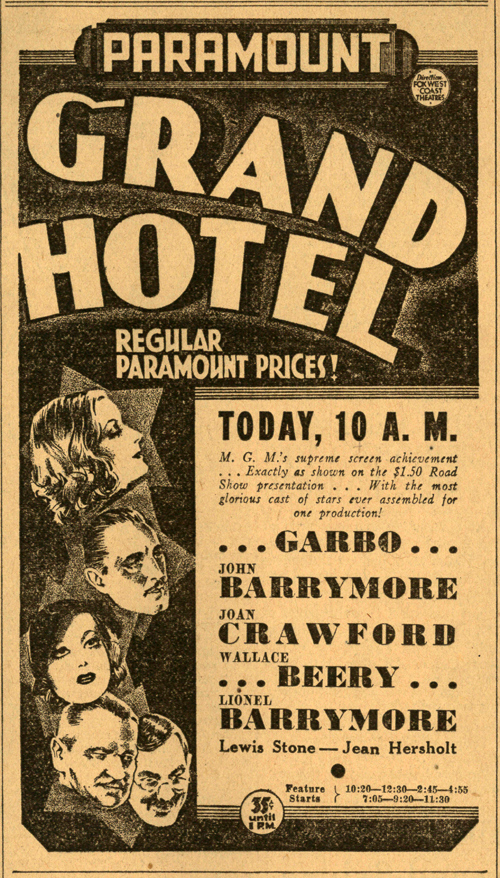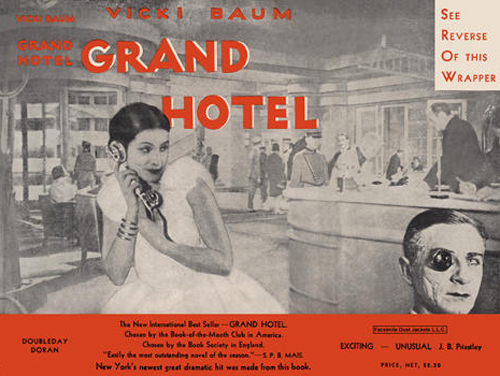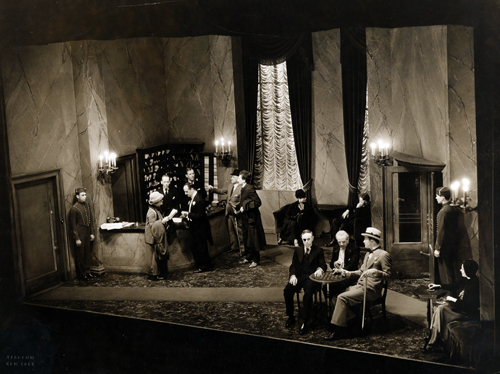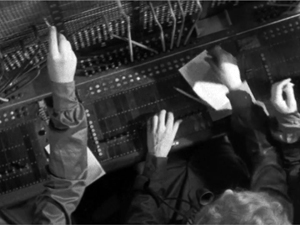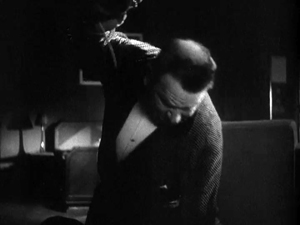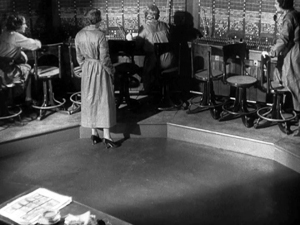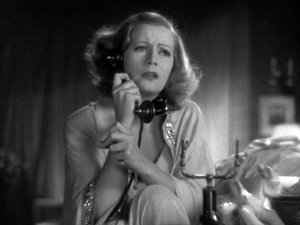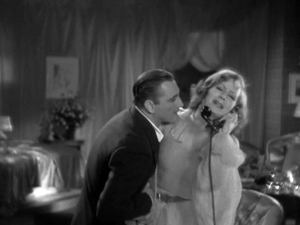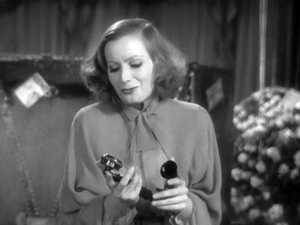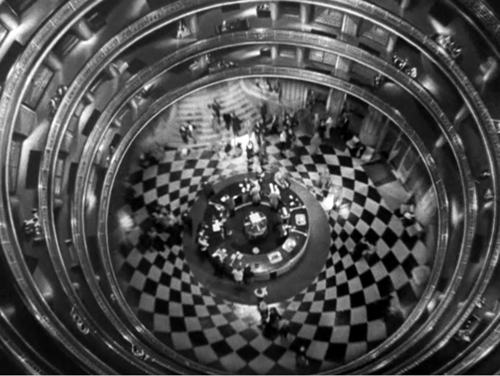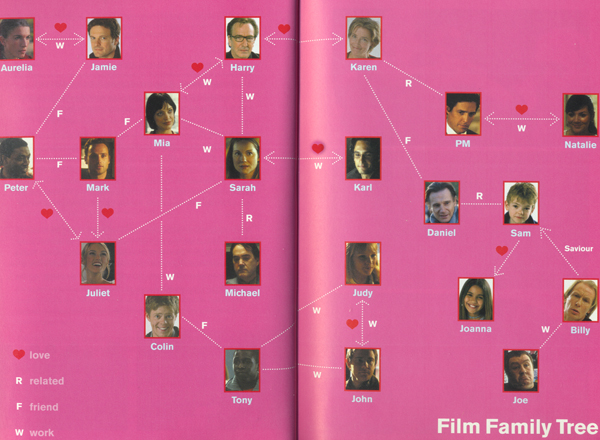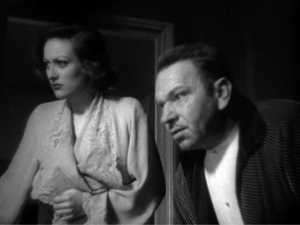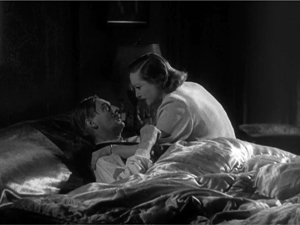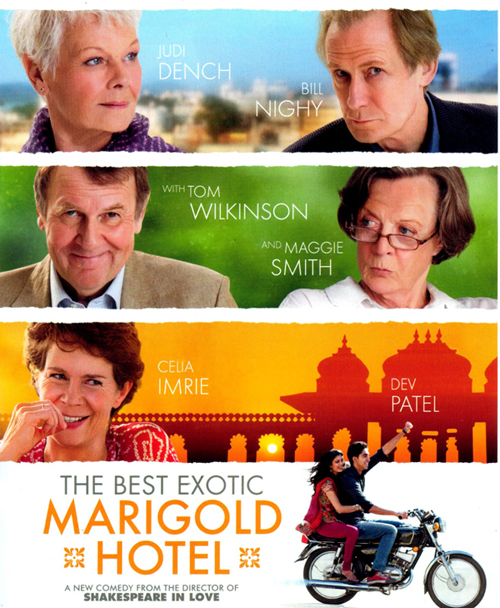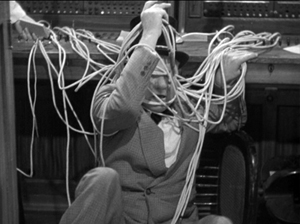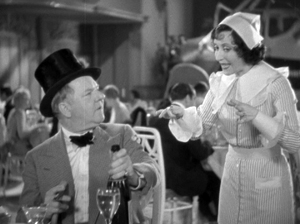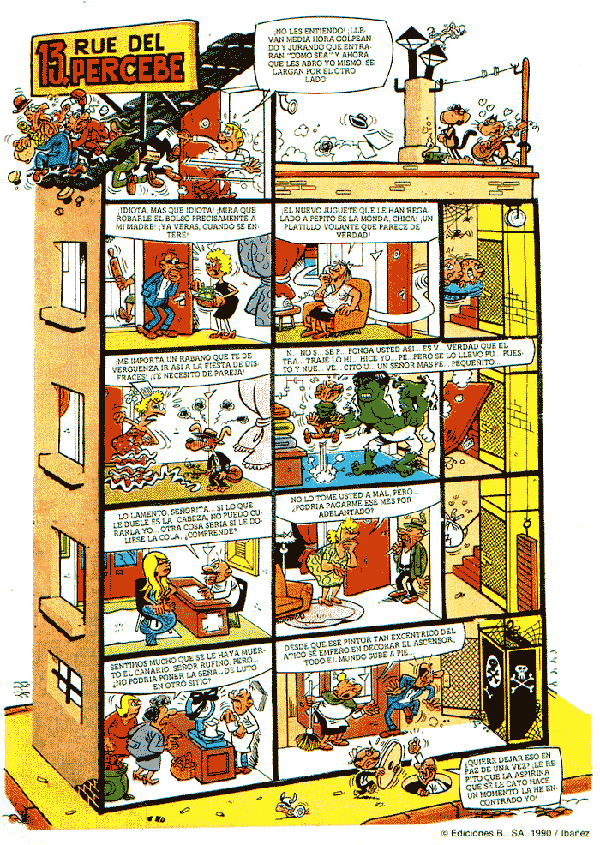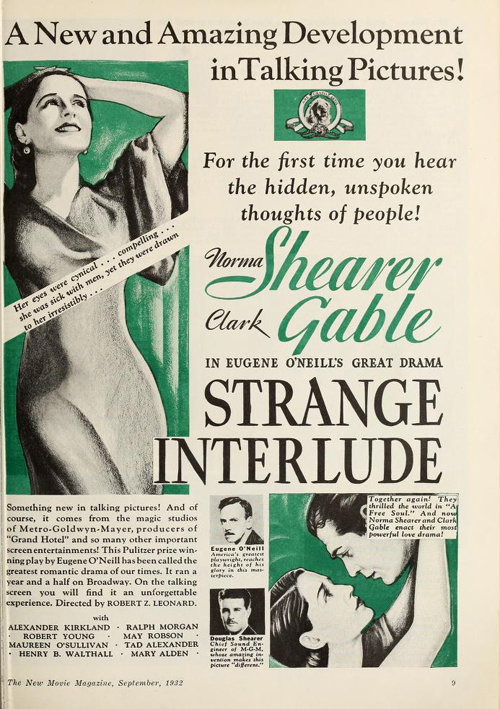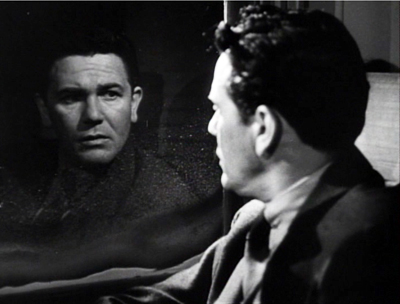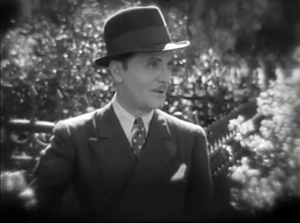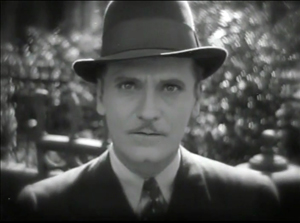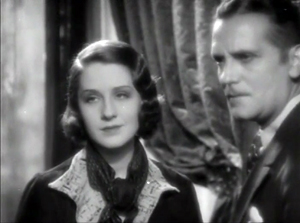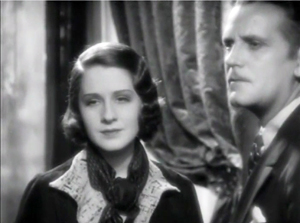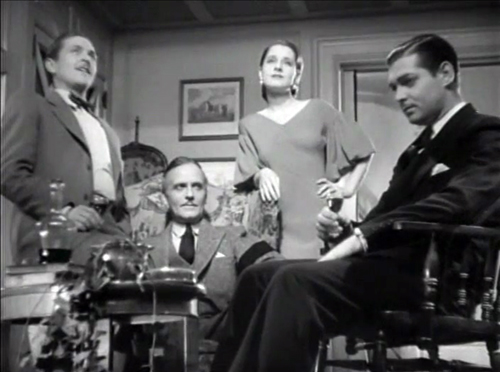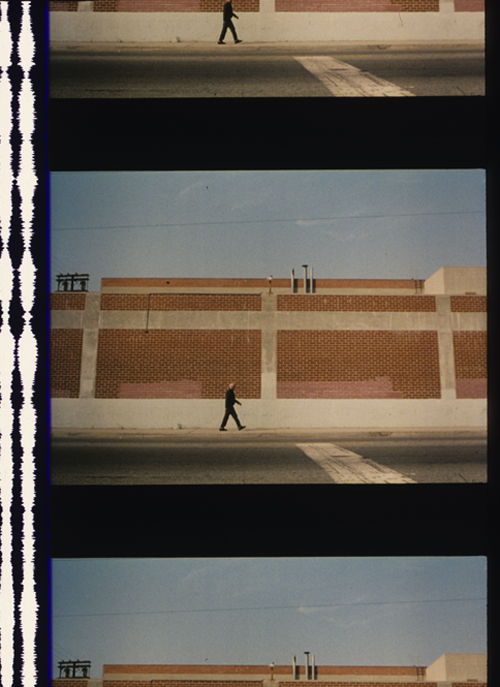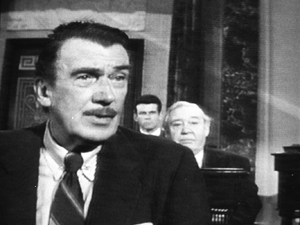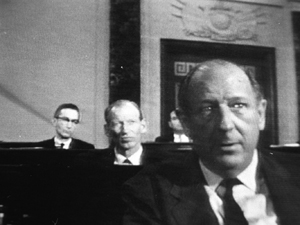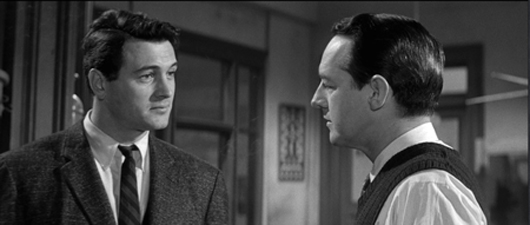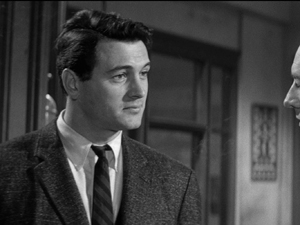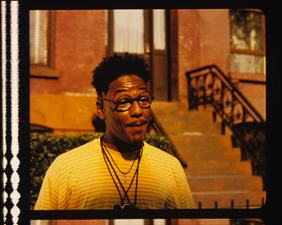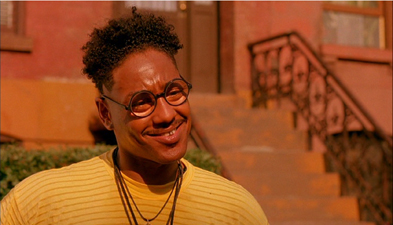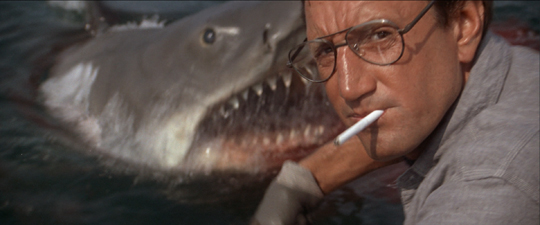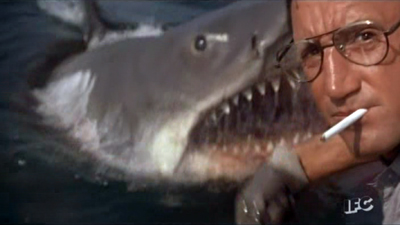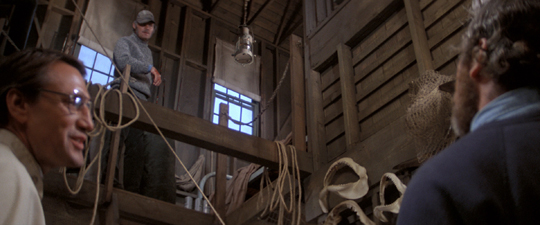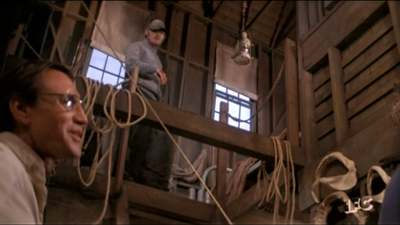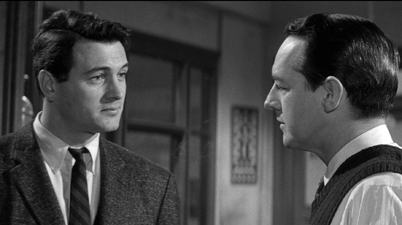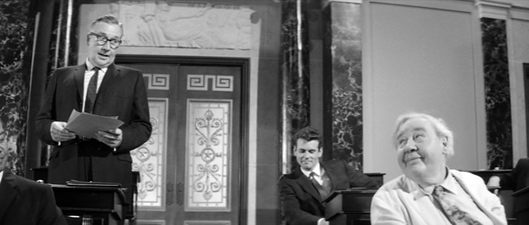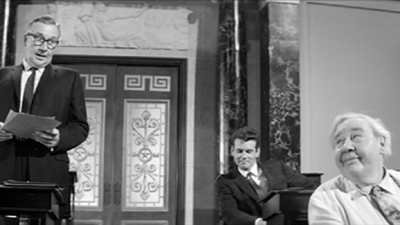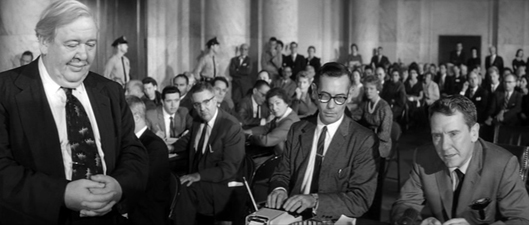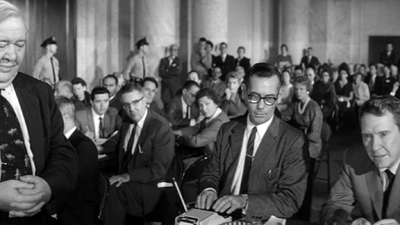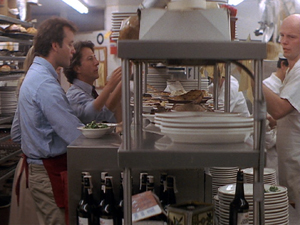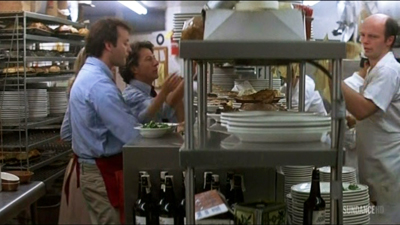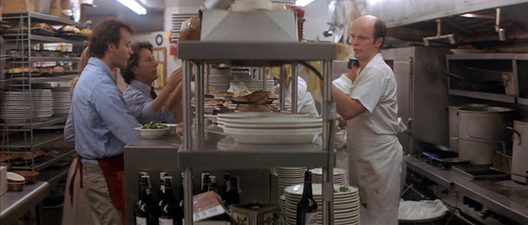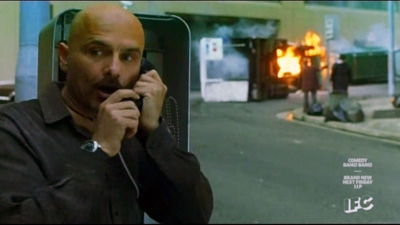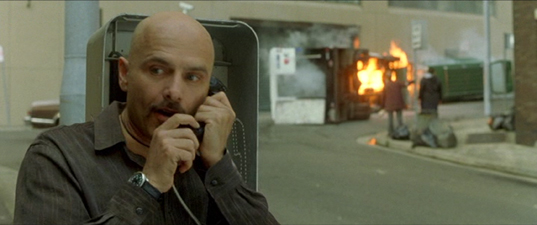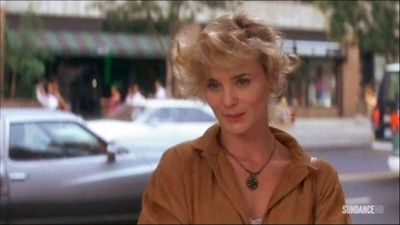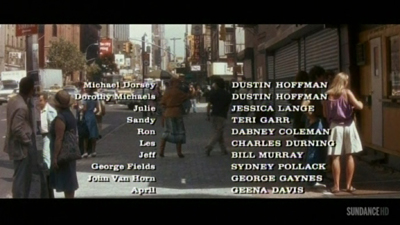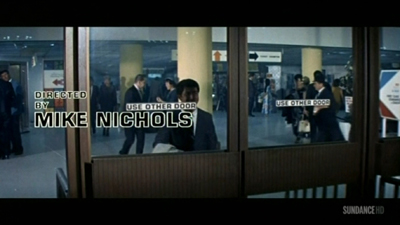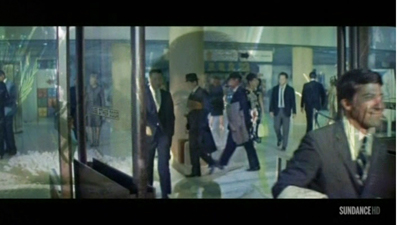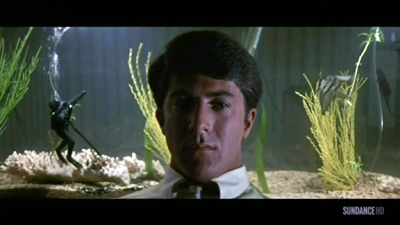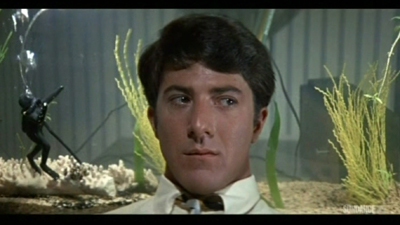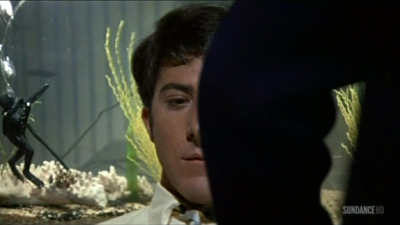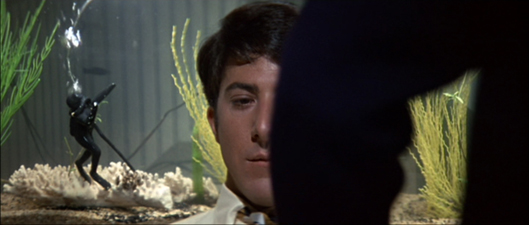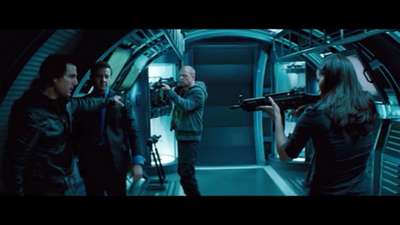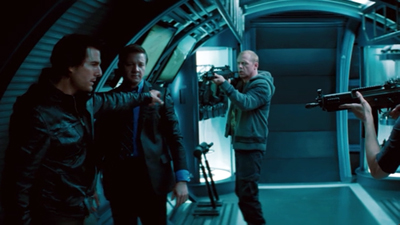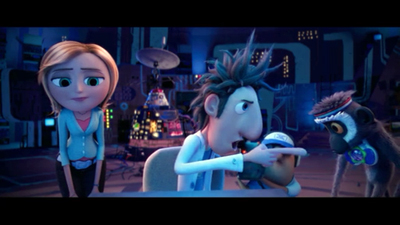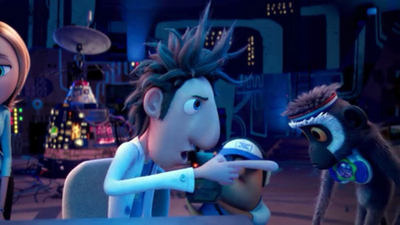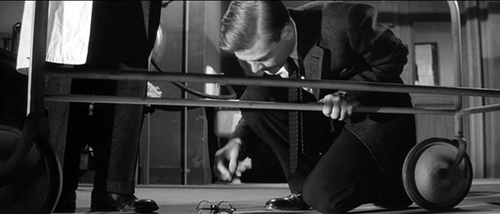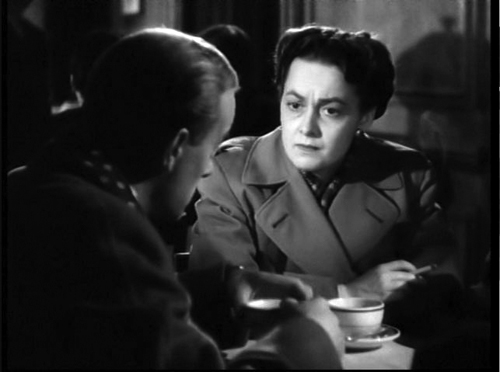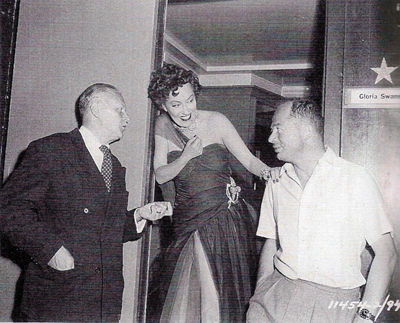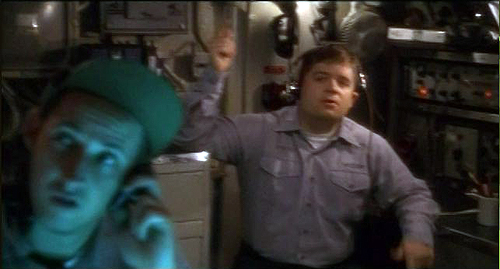Archive for the 'Film and other media' Category
1932: MGM invents the future (Part 2)
Courtesy John McElwee and his gorgeous, informative site Greenbriar Picture Shows.
DB here:
The inner monologue, as a report of a character’s immediate thoughts, seems to have been rare in 1930s films; it became more prominent in the 1940s. But the second big MGM narrative innovation of 1932 was almost instantly influential, redone and nearly done to death in the decades that followed. Even before the film was released, the idea of a “Grand Hotel plot” had gripped both the public and professional storytellers. And it never went away.
In the Strange Interlude entry, I mentioned that what’s usually of interest to us when we try to track the history of film forms is not the first time something is done but the moment when it becomes recognized as an active option. It stands forth as a strategy that can be copied, standardized, and revised. The Grand Hotel idea itself wasn’t utterly new, but the novel, play, and film of that title crystallized it as a distinct choice on the filmmaking menu.
The book: Only approximations
Vicki Baum, an emerging German novelist, launched Grand Hotel as a magazine serial. It was published in book form in 1929 as Menschen im Hotel and became a huge seller. The following year saw Baum’s international breakthrough. In January a stage version opened in Berlin. It migrated to Broadway in November and enjoyed huge success. Meanwhile, a British publisher brought out an English translation. In February of 1931, Doubleday published an American edition. That month Baum arrived in Hollywood to work on the screenplay for what she called her “star-studded wedding cake.”
The central story remains constant in all the media versions. Three men converge in Berlin’s Grand Hotel, each with his own aims. Baron von Gaigern is a penniless aristocrat who has taken to theft. The provincial bookeeper Kringelein has been diagnosed with a fatal disease, so he has vowed to enjoy the good life before he dies. He demands a costly room and plans to wine, dine, and gamble his savings away. The business mogul Preysing is there to meet with potential partners in a big business deal. Preysing, it turns out, is the owner of the company employing Kringelein.
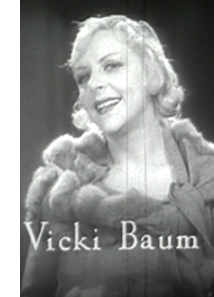 The men’s plans pull two women into their orbit. There is the glamorous but fading dancer Grusinskaya. She meets the Baron when he slips into her room to steal her pearls; during that night of sexytime they fall in love. Then there is the stenographer Flaemmchen, who takes a liking to the Baron but who is dominated by Preysing. He has hired her to record his deal-making, and he soon invites her to be his mistress. Add in secondary characters like the porter Senf, who at the start is waiting for news of his wife’s delivery of their baby, and Dr. Otternschlag, a disfigured war veteran who drifts around the lobby mournfully observing life.
The men’s plans pull two women into their orbit. There is the glamorous but fading dancer Grusinskaya. She meets the Baron when he slips into her room to steal her pearls; during that night of sexytime they fall in love. Then there is the stenographer Flaemmchen, who takes a liking to the Baron but who is dominated by Preysing. He has hired her to record his deal-making, and he soon invites her to be his mistress. Add in secondary characters like the porter Senf, who at the start is waiting for news of his wife’s delivery of their baby, and Dr. Otternschlag, a disfigured war veteran who drifts around the lobby mournfully observing life.
The novel’s action consumes three days and nights, with an epilogue on the morning of the fourth day. Each major character undergoes a crisis triggered by meeting others in the hotel. Preysing catches the Baron in his apartment, bent on robbery. In beating the Baron to death, Preysing ruins his life; he is arrested and his family leaves him. Flaemmchen, about to go off with Preysing, attaches herself to Kringelein and vows to help him recover his health. Grusinskaya, who has left Berlin for her tour date in Prague, calls the Baron’s room in vain, unaware that she will never see him again.
The book offers several attitudes toward the interwoven destinies. There is that of the grim Dr. Otternschlag, who sees in the lobby’s revolving door a ceaseless cycle of mundane suffering. “Always the same. Nothing happens. . . . And so it goes on. In—out, in—out.”
The bellboy looks at the same door and sees endless variety: “Marvelous the life you see in a big hotel like this. . . . Always something going on. One man goes to prison, another gets killed. . . .Such is Life!”
The omniscient narration provides another attitude, seeing in the door an image of life’s ephemeral, fragmentary quality.
The revolving door twirls around and what passes between arrival and departure is nothing complete in itself. Perhaps there is no such thing as a completed destiny in the world, but only approximations, beginnings that come to no conclusion or conclusions that have no beginnings.
All three musings represent, we might say, alternative ways of reading the novel: as an eternal return, a varied pageant of human drama, or scattered glimpses of incomplete lives.
Play and film: Call waiting
National Theatre production, New York 1930.
The novel spreads the action to the theatre, a casino, and an airplane flight, but the stage version confines itself wholly to the hotel. The play begins with a coup de théâtre for which Baum claimed the credit. Preysing, Kringelein, the Baron, Flaemmchen, and Grusinskaya’s maid Suzanne are introduced in a line of telephone booths, each making a quick phone call. The light in each booth flashes on and off as each one speaks. The pace builds until each speaker is “intercut” rapidly with another. Baum claimed that this pulsating sequence drove the opening-night audience to a frenzy of applause. Snazzy as it is, the prologue serves as crisp exposition, literally spotlighting nearly every major character, with Suzanne acting as a proxy for the dancer Grusinskaya. Then the revolving stage whisks us to a broad view of the lobby teeming with guests and staff.
The novel can proceed in a fragmentary way, shifting from one character to another, but the play contrives a more fluid rhythm of encounters. At the start, several characters assemble at the front desk, and after a “cutaway” to Grusinskaya’s room, we’re back in the lobby with Flaemmchen, the Baron, and Kringelein chatting while Preysing and his colleagues head off to their conference. Later all the major characters except Grusinskaya, who’s often marked as separate from the others, meet in the hotel bar and grill. At the conclusion, as characters depart, overlapping encounters carry Flaemmchen out the door with Kringelein, and Grusinskaya leaves for Prague wondering why the Baron has failed to meet her. The spatial concentration of the play squeezes the characters’ trajectories together more tightly than the novel does.
The film does much the same thing. When head of production Irving Thalberg bought the rights to Baum’s novel, he had to buy the stage rights as well, and so MGM funded the Broadway production. It garnered over a million dollars in its first year.
Claus Tieber points out that having seen the play, Thalberg insisted that the bits that pleased the Broadway audience had to stay in the film. No wonder that the film sticks close to the stage version. Although sequences are added, they seem in the spirit of the play’s swift pace. An American critic had described the book’s rapid changes of scene as like a film: “interlocking adventures, a little too easily linked perhaps, flit from screen to screen [shot to shot?].” Baum agreed:
I realized what had made my Grand Hotel, the novel and the play, a world success: it was probably the first of its kind to be written in a sort of moving picture technique. By now [1964] that’s the oldest of old hats, but in those days the kaleidoscopic effects, brief ever-changing scenes, flashes, staccato dialogue, were new, surprising, and exciting…on the stage. On the screen, I felt, this technique was the usual old stale shopworn thing.
In a crucial expansion of both book and stage show, the film emphasizes the telephone switchboard, marking the hotel as the crossing point of many destinies. After Preysing has beaten the Baron to death with a phone receiver, the switchboard is ominously stilled at the climax.
The prologue shows other protagonists making calls, but Grusinskaya, because of her isolation from the others, works the phone in the bulk of the film. Her final call for the Baron goes unanswered, heard only by his dog.
The play had enhanced the women’s roles, and the film goes farther by casting two top stars, Greta Garbo as Grusinskaya and Joan Crawford as Flaemmchen. With three strong male leads—Wallace Beery as Preysing, Lionel Barrymore as Kringelein, and John Barrymore as the Baron—the film became an ensemble drama that gave more or less equal weight to five characters. Accordingly it became known as the first “all-star picture.” On its tenth anniversary Variety proclaimed that it “disproved the contention that no picture could support a huge all-star cast.”
Even putting the cast aside, Grand Hotel crystallized a narrative option that had been emerging, more or less explicitly in the years before.
Networks and cross-sections
We can think of the Grand Hotel format as one variant of what I’ve called network narratives. Putting it generally, these are films that shift our attention across several somewhat linked characters and their projects.
Most films we encounter have a single protagonist, accompanied by helpers and facing some number of antagonists. Other plots have dual protagonists, perhaps cops who are buddies, or a man and a woman in a romantic relationship. A few films may have three protagonists, like Letter to Three Wives.
Another variation is the film with several protagonists, each given roughly equal weight. Usually the multiple protagonists share a goal, as in combat films, where they are united in a common mission. But when we have multiple protagonists pursuing different, largely unrelated goals, we have what I’m calling a network narrative.
What makes all these characters part of the same network? Any social relation. They might be relatives, friends, co-workers, classmates, neighbors, ex-lovers, or whatever. Also, mere proximity can connect characters; maybe they’re in the same hospital room or conference meeting or just in the same town.
As the film unfolds, we come to understand the array of characters and their connections. We follow one, then another, and we watch new relationships form. Sometimes hidden relationships are revealed to create a surprise. Some connections are distant, of the n-degrees-of-separation variety. The characters’ various purposes may run parallel, or they may intersect and clash—all more or less accidentally. Most plots of any sort are connected by causality, but network narratives are once tight (because of the pressure of the characters’ goals) and loose (because social ties can flow in many directions).
The advantage of the network approach is to yield a cross-section of life denied to more traditional linear narrative. Such plots can present, as Joseph Warren Beach puts it, a “comprehensiveness of view” that becomes “a composite picture of many distinct lives.” But the strategy raises problems too. The idea of a network narrative invites a dizzying expansion. X meets Y, who’s married to Z, the friend of A, who works with B, and pretty soon your story world is growing out of control. You need to constrain it somehow.
One way, as in Slacker, is just to sample one string of the network, moving from node to node. This generates a sort of “slice of life” plot, in the manner of Naturalist theatre. That snatches a few episodes from central characters’ lives without the customary setups and resolution. Bernard Shaw noted that “The moment the dramatist gives up accidents and catastrophes, and takes ‘slices of life’ as his material, he finds himself committed to plays that have no endings.” In film, we might think of one prototype of Neorealist cinema, The Bicycle Thieves. Baum’s framing narration of Grand Hotel, with its musing on stories without clear-cut beginnings or resolutions, tries for the same sense of what Zola called “a fragment of existence.”
Some of the literary models, such as The Lower Depths, accept a slice-of-life approach, without traditional climaxes and resolutions. Modernist writers pushed this possibility further, very open-textured networks. Dos Passos’ USA trilogy (1930-1936) is one example. Evelyn Scott’s The Wave (1929) presents seventy episodes from the Civil War, each concentrating on a different individual, although some characters reappear in sections devoted to others. A comparable strategy rules William March’s Company K (1933), with its 131 vignettes of World War I, with each soldier’s scene narrated in first person. Again, some characters reappear, but the network is largely a dispersed one.
Novels with well-defined protagonists occasionally strayed into a more lateral, open-textured approach. One example is the Wandering Rocks section of Ulysses, which fleetingly probes the minds and actions of about a hundred Dubliners moving through mid-afternoon. In Woolf’s Mrs. Dalloway (1925), a sudden noise from a car stuck in traffic, followed by an airplane swooping above, causes various members of a crowd to think stray thoughts. Like Joyce, Woolf momentarily broadens the frame to register the reactions of characters unconnected with the protagonists, except by being present outside Buckingham Palace at the same moment. Only space and time create this network, and it’s ephemeral.
Bring us together
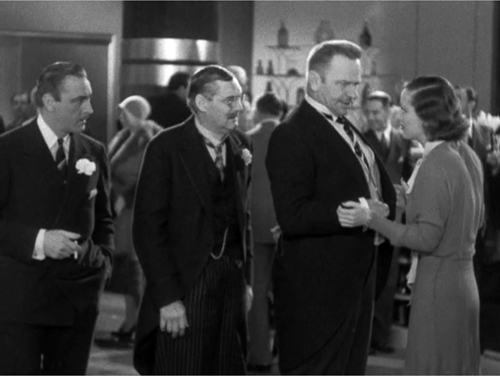
Given our appetite for linear narrative, some storytellers are bound to seek ways to tighten things up. Can we graft normal plot development—goals, conflicts, rising tension, climaxes, and resolutions—onto the network idea?
Yes. One way is to create the network through a circulating object, as in Tales of Manhattan, Au hasard Balthasar, American Gun, Twenty Bucks, or The Earrings of Madam de…. Sometimes the result will be episodic, but other times there will be a rising tension and a conclusion to at least some lines of action.
The most common way to constrain the network is to multiply the connections within the group. That is, don’t make the network loosely woven. So X meets Y, who’s married to Z, the friend of A; but A works with X, who is the cousin of B, who has been having an affair with Y, and so on. In other words, you create a “small world” defined by several connections among all the participants.
This small-word model is common in novels that create network narratives. Dickens, Balzac, and other writers have created complex degrees-of-separation plots. It’s likewise the pattern for most network narratives on film: several connections link many of the nodes. Here’s a diagram for Love Actually.
This chart is oversimplified because it doesn’t account for other relationships. Colin, for example, as the sandwich delivery boy, interacts with several of Harry’s employees. Still, at a glance you can see a fairly tight network.
Another way to constrain the network is to set limits of space and time. Slacker, like Mrs. Dalloway, explores a network established by spatial proximity; when we leave one character we pick up another nearby. The circulating-object option often presumes that the characters share a locale. Love Actually limits its intertwined stories to London, and still further to the Christmas season there. Louis Bromfield’s 1932 novel Twenty-Four Hours follows its Manhattan ensemble through one full day. (Compare that unlamented recent release, Valentine’s Day.) A 1938 British film, Bank Holiday traces several people across a weekend at a seaside resort.
The space can be more radically limited, as in Waldo Frank’s book of interconnected short stories City Block (1922). Perhaps influenced by Frank’s book, Elmer Rice wrote and staged Street Scene, a 1929 play that weaves together the lives of people living in a tenement. Their relationships are played out on the building stoop and the street in front. The play was filmed in 1931, and perhaps if it had been more successful, or had featured many big stars, we’d be talking about “Street Scene plots” rather than Grand Hotel ones.
Buildings are ideal for tying story lines together. Zola’s novel Pot-Bouille (1882) confines its action largely to an apartment house and the people who live there. Gorky’s play The Lower Depths brings together several characters in a flophouse. Inns, taverns, and hotels are natural points of convergence, and travelers naturally bring story action along with them. This is the narrative convention of l’auberge espagnole, based on the idea that in a Spanish inn you bring your own food.
When we have mostly strangers interacting in a constrained time and space, and when those interactions lead to traditional conflicts and resolutions (avoiding the slice-of-life pattern), we can speak of “converging-fates” narratives. Grand Hotel became the great prototype of converging-fates plotting.
Baum modernized the auberge espagnole idea by concentrating the action in a luxury hotel. She understood that these surroundings could motivate the chance meetings that propel the plot. She wasn’t alone. At the time her book was published, there were other “hotel” novels, notably Arnold Bennett’s Imperial Palace (1930). Whereas Bennett emphasizes the hotel staff and its routines, Baum concentrates on the guests. She motivates her comparisons across classes by making Kringelein a poor man having a final fling and making the Baron a penniless aristocrat keeping up appearances.
Baum showed how filmmakers who wanted an ensemble plot could bypass the sort of fragmentary, open-textured network seen in Dos Passos, The Wave, or Company K. She showed how to build more tightly integrated situations, with intersecting characters, each pursuing his or her goals and unexpectedly affecting other characters. The whole dynamic would take place in a rigorously confined setting and a sharply bounded period of time. The disparate story lines, knotting in certain scenes, would build to a climax. In Grand Hotel, all the characters’ fates come together when Preysing kills the Baron. Flaemmchen, terrified, rouses Kringelein and brings him into the crisis.
In such ways, a network narrative could become a variant of classical plotting, complete with exposition, conflict, crisis, and climax. Now Baum’s claim that the book traces mere fragments of life seems to be camouflage. Each protagonist’s fate has a linear logic; it’s just that the lines intersect.
If you’re a modernist, you find this a dilution of strong brew. You deplore the way fiction writers and moviemakers adapt avant-garde techniques to middlebrow taste. Yet if you’re a mainstream filmmaker, you can see that absorbing these techniques freshens up the norms. The crisscrossing destinies create an urgent pace, a new openness to chance and accident, and an invitation to imagine a patterning beyond that of straightforward single- or dual-protagonist plotting. Hollywood may feed on more “advanced” storytelling, but it doesn’t simply iron out the difficulties; in absorbing the techniques, it enriches its own traditions.
Thalberg predicted this change when the film was in production.
I don’t mean that the exact theme of “Grand Hotel” will be copied, though this may happen, but the form and mood will be followed. For instance, we may have such settings as a train, where all the action happens in a journey from one city to another; or action that takes place during the time a boat sails from one harbor and culminates with the end of the trip. The general idea will be that of a drama induced by the chance meeting of a group of conflicting and interesting personalities.
The last sentence isn’t a bad encapsulation of the converging-fates schema.
Hotel franchising
Thalberg was right, of course. Grand Hotel, in all its incarnations, encapsulated a narrative option that was irresistible. By 1955 Kenneth Tynan paid tribute to the fertility of the idea.
No literary device in this century has earned so much for so many people. Unite a group of people in artificial surroundings—a hotel, a life-boat, an airliner—and, almost automatically, you have a success on your hands.
Baum compared herself to the sorceror’s apprentice, who couldn’t stop her creature from splitting and rushing off in all directions. Critics detected traces of the novel and play in Translatlantic (1931), Union Depot (1932), and Hotel Continental (1932), all released before the MGM vehicle. These films do confine most of their action to a single setting, but they don’t multiply protagonists to the same extent as the original. A 1932 play, Life Begins, is closer to Baum’s model, finding converging destinies in a maternity ward. Some suspected that the 1932 film, released in May, was Warners’ effort to compete with Grand Hotel, premiering in April but not going wide until summer and fall.
MGM imitated itself in another 1932 release, Skyscraper Souls, which applied the formula to an office building. Faith Baldwin’s original novel Skyscraper focused on a working-girl romance, but the screenplay expanded the plot. A great many characters working in the skyscraper get involved in love affairs, a stock swindle, and an aborted jewelry theft. As with Grand Hotel, all the action transpires in one building.
Like Strange Interlude, Grand Hotel inspired parody. In Paramount’s International House (1933) various personalities converge on a hotel in Wu-Hu, China, to buy the rights to Dr. Wong’s “radioscope” (aka TV). W. C. Fields, Stuart Erwin, Bela Lugosi, Franklin Pangborn, Cab Calloway, Rudy Vallee, George and Gracie, and the notoriously torrid Peggy Hopkins Joyce enliven the proceedings. There’s an allusion to the hotel switchboard in the original film when Fields gets tangled up in phone cables. He’s also flummoxed by Gracie Allen.
After one of Gracie’s non sequiturs Fields asks: “What’s the penalty for murder in China?”
A curious parallel surfaced in Die Wunder-bar, a German play premiered in February 1930, just a month after the opening of Grand Hotel’s stage version. Transposed to film, it became an Al Jolson vehicle, Wonder Bar (Warners, 1934). It has a fairly coherent threads-of-destiny plot. Flirtations, suicides, and musical numbers (including one with Al in blackface, of course) fill out action occurring in a single day. There was also Die Uberfahrt, a 1932 novel by Gina Kaus, translated as Luxury Liner and filmed under that title by Paramount in 1933. Variety called Wonder Bar “a ‘Grand Hotel’ of a Paris boite-de-nuit,” and Motion Picture Herald called Luxury Liner “Grand Hotel on a steamboat.”
The Grand-Hotel-on-an-X formula became a catchphrase, like Die-Hard-on-an-X of years later. We associate the phrase “Grand Hotel on wheels” with Stagecoach (1939) because that was used in its publicity. But reviewers had applied that phrase earlier, to Streamline Express (1935) and Time Out for Romance (1937)—the former involving a train, the latter an automobile convoy. The British import Rome Express (1933) was “Grand Hotel on a train” and Mitchell Leisen’s fine Four Hours to Kill (1935), set in a theatre lobby and lounge, became “Grand Hotel in miniature.” Fifty-four Ames Street, a screenplay apparently never filmed, was said to be “a sort of Grand Hotel in a New York apartment house.” Producers interested in Saroyan’s play The Time of Your Life saw in its tavern locale and migrating flocks of characters “an all-star vehicle somewhat along the lines of ‘Grand Hotel.’”
One critic worried that Winter Carnival (1940) was tantamount to “Grand Hotel on skis,” but F. Scott Fitzgerald, sweating over the script, had worried that it couldn’t be “a group picture in the sense that Stagecoach was, or Grand Hotel.” It had, he noted, “no sense of destiny.” That sense was much stronger in One Crowded Night (1940), an RKO B that I’m fond of. It might be called “Grand Motel,” as it brings together a preposterous number of plotlines at a desert auto court.
The Grand Hotel paradigm did not rest. The original film was remade, in more complicated form, as Week-End at the Waldorf (1945). There were other variants of the template—famously Lifeboat (1943) and Hotel Berlin (1945), less notably Ulmer’s Club Havana (1945) and the PRC cheapie The Black Raven (1943). Life Begins was redone as A Child Is Born (1940), and at the end of the decade Harry Cohn expressed interest in remaking it again. The play Flight to the West (1940), set on an airplane, showed Elmer Rice contributing to the trend.
By 1943, a Variety columnist was admitting that there was a tradition behind it all. “Ever since Boccaccio rounded up a herd of characters in his Decameron, dramatists have been utilizing the restricted space idea to make their stories more compact.” What he did not say was that most of Grand Hotel knockoff movies had been B-pictures.
Baum bitterly resented what had happened to her most famous work. “Countless cheap imitations and adaptations gave it a bad name. . . It all quickly became a mechanical toy. A formula, to be bought and sold on the supermarket.” That didn’t stop her from ringing changes on her model. Her play Pariser Platz 13 (1930), set in a beauty parlor, and her novel Martin’s Summer (1931), tracing a drama among strangers at a vacation resort, inevitably recalled her breakthrough work. She mined the vein again with Hotel Shanghai ‘37 (1939) and Hotel Berlin ’43 (1944). Things became risible when Variety announced that she was preparing a (never-filmed) screenplay called Grand Central Market, based on an idea by a busboy in the MGM commissary. But perhaps she wouldn’t have minded the jeers that she was milking her most marketable idea. “I know what I’m worth: I am a first-rate second-rate author.”
Catch them coming or going
The Grand Hotel converging-fates format got recycled for decades, in movies from The V.I.P.s and Hotel to Four Rooms and Auberge Espagnole. Network narrative as a general trend came back in a big way in the 1990s. In an essay for Poetics of Cinema, I counted some 148 examples just from the period between 1994 (Pulp Fiction, 71 Fragments of a Chronology of Chance, Ready-to-Wear, Chungking Express, Exotica) and 2006 (Bobby, Colossal Youth, Selon Charlie), by way of Do The Right Thing, Magnolia, Sunshine State, Wonderland, and Happiness. Filmmakers, mostly non-Hollywood ones, revived and reformatted the old template. They could cunningly resolve some story lines, and so satisfying our fondness for closure, while also leaving some unresolved, and so satisfying our belief in realistic “slices of life.”
Although I should be fed up with such plots, I still find them intriguing. They can yield mystery, as we’re teased about the possible connections among the characters; their network pattern can be revealed or obscured by flashbacks, subjective sequences, frame stories, forking-path patterns, and other devices, as in Go and Once Upon a Time in Triad Society 2. The format can really test the ingenuity of a screenwriter.
Still, network plots pose unique problems. One is figuring out all the interactions in situ. How do you weave everything together? Apart from kinship and friendship, the easy links are chance encounters, merely passing in the street, watching somebody on TV, or, most desperate of all, the traffic accident. (Crash is only the most egregious instance.) Finding fresh ways to hook up your nodes is quite a challenge, as is devising a satisfying payoff for at least some of them.
Another problem is more specific to the converging-fates option: the choice of “point of attack.” Taken just as geometry, the plot can be seen as having three phases. Here’s an infographic courtesy of our web tsarina Meg Hamel. On the left, the characters are independent. In the center–a closed environment like a hotel, or a more porous one like a holiday season–they are drawn together. They circulate and interact. On the right, we see them dispersing, all changed in one way or another.
The question is: Where do you cut into this process to start and end your plot? Some films, like In Which We Serve, try to trace the whole process more fully. We see it in a more spacious form in The Great Race and Cannonball Run. Perhaps The Rules of the Game would be another instance.
But most films of this ilk concentrate on the convergence, the central circle of interaction we see in Grand Hotel. That’s what we find in Mizoguchi’s Street of Shame, The Uchoten Hotel, Drive-In, Health, The Yacoubian Building, Monsoon Wedding, et al. Often there’s a time pressure too, as the clocks in the graphic indicate.
Or you the screenwriter could shift a step back and base your plot on the action before the characters commingle. My red block indicates a plot concentrating on this early phase. The dotted line indicates our seeing a little bit of the convergence.
The prototype is probably Dinner at Eight, a 1932 play made into a 1933 film (yes, also by MGM). The comic plot traces several couples invited to a dinner party. Some of them have one-off encounters before the big night, but the plot depends on the eventual convergence of everyone. The film stops just as the assembled guests step into the dining room. A modern parallel is 200 Cigarettes, which intercuts several guests on their way to a party. Again, we don’t see the party directly, but in an epilogue a montage of snapshots gives us some glimpses.
Probably the most famous example of pre-convergence plotting is the novel The Bridge of San Luis Rey. Thornton Wilder uses a flashback construction to trace the lives of the characters. At the start we learn that the bridge collapsed, killing them all, and then via an inquisitive priest we are taken back to the events that brought them to the same fate. By contrast, Claude Lelouche’s Il y a des jours…et des nuits saves the moment of convergence for a traffic tieup at the very end of the film.
Alternatively, you could build your plot at the other end, as indicated by my green box. Your story action begins with the dispersal of the characters who have already converged, though perhaps you show something of their encounters before they split up.
This is the rarest option, I think. One example is Benedict Fliegauf’s The Forest, which shows several people leaving a train station and proceeding on to their parallel, and fairly mysterious, lives. A more heavily motivated example is Sylvia Chang’s film 20 30 40, which initially brings three women together as passengers on an airplane flight before sending each off to her own pursuits. Although they live in the same neighborhood and their activities are intercut, the women never meet. Two films I haven’t seen seem to follow this parallel-dispersal pattern. In Urlaub auf Ehrenwart (Leave on Word of Honor, 1938), a commander gives his men leave for a day on their way to the front, and the plot follows each one’s experiences. It was adapted into a Japanese film, The Last Visit Home (Saigo no kikyo, 1945).
As with any plot scheme, the closer you look, the more variations and extensions you see. Sometimes it’s useful to see any one plot as a reconfiguration of other plots. The network principle–itself a threading of goal orientation, conflict, and other narrative devices–can be a beautiful meeting point of story possibilities. One reason I think filmmakers like these plots is that, somewhat like mystery stories, they are narrative to the nth degree. How many situations, characters, and unexpected connections and analogues can you squeeze into a single movie? It’s a challenge.
What crystallized in an MGM prestige production of 1932 seemed a fresh approach to film narrative. Even in the opportunistic ripoffs of the following decades, we can sense an excitement in tinkering with a new storytelling pattern. And of course some variants still seize us today. Just ask the audience making its way to The Second Best Exotic Marigold Hotel, or the young hipsters immersed in the mini-library that is Chris Ware’s Building Stories. Lately we haven’t seen many network movies, but I expect another wave. Like it or not, some story ideas never die.
My information about Vicki Baum’s career comes from Lynda J. King’s Best-Sellers by Design: Vicki Baum and the House of Ullstein (Wayne State University Press, 1988). I drew my Baum quotations from two curiously different editions of her memoirs, I Know What I’m Worth (Joseph, 1964) and It Was All Quite Different: The Memoirs of Vicki Baum (Funk and Wagnalls, 1964). The reviewer who called Baum’s novel cinematic was Herman Ould in “Experiments in Technique: Vicki Baum and Arnold Zweig,” The Bookman 79 (November 1930), 132.
Claus Tieber analyzes the Grand Hotel story conferences in “‘A story is not a story but a conference’: Story conferences and the classical studio system,” Journal of Screenwriting 5, 2 (2014), 225-237. In correspondence Patrick Keating has shared with me a story conference concerning Skyscraper Souls (MGM, 1932), in which the participants discuss transitions between scenes. Should the film cut from one plotline to another, or use camera movements, or have the characters link to one another? The filmmakers discuss Grand Hotel as a model for handling the problem. Thanks to Patrick for the information.
Joseph Warren Beach provides a helpful survey of experiments in mainstream fiction of this period in The Twentieth Century Novel (Appleton Century Crofts, 1932). I’ve drawn upon his chapter “The Breadthwise Cutting.” Shaw’s remarks on the slice-of-life plot are in his Preface to Three Plays by Brieux (Brentano’s, 1913), xv-xvi. In The Writing of Fiction (Scribners, 1924) Edith Wharton comments that English novelists of the early nineteenth century favored the “double plot,” a form that presented “two parallel series of adventures, in which two separate groups of people were concerned, sometimes with hardly a link between the two” (81). She considers this a “senseless convention,” but it seems to me another means of creating a network narrative. Sometimes the nodes connecting the groups become clear only gradually. There may be even a dose of mystery, as in Our Mutual Friend; the reader is encouraged to wonder how the two ensembles might be hooked up.
The diagram of the network in Love Actually comes from Peter Curtis, Love Actually (St. Martin’s, 2003), 6-7. Although at least one story line in the film doesn’t get fully resolved, Curtis is committed to a classical model: “I thought I’d like to have a go at writing that kind of film–to see if it was possible to write a film with nine beginnings, nine snappy middles and nine ends.” He declared himself inspired by Nashville, which I’d argue has a much looser texture and treats its story lines largely as slices of life.
Kenneth Tynan’s remark comes from his 1955 essay “Thornton Wilder,” reprinted in Profiles, selected and edited by Kathleen Tynan and Ernie Eban (Random House, 1995), 106. My citations of critical commentary on various films comes from the Hollywood trade press, as indexed in Lantern. Thalberg’s remark on Grand Hotel‘s likely influence is quoted from “Producer Discusses Pictures,” New York Times (3 May 1931), X6. Peter B. High discusses The Last Visit Home in his The Imperial Screen: Japanese Film Culture in the Fifteen Years’ War, 1931-1945 (University of Wisconsin Press, 2003), 485-487.
My fullest treatment of network narratives is in Poetics of Cinema, in the essay “Mutual Friends and Chronologies of Chance.” To the same subject Peter Parshall devoted an insightful book, Altman and After: Multiple Narratives in Film, which I plug here. A search of our site with “network narrative” as the key phrase will turn up several remarks on the format.
P.S. 23 March 2015: Thanks to Antti Alanen for a correction: I had accidentally written that Pot-Bouille was by Balzac, not Zola.
P.P.S. 31 March 2015: Rewatching Skyscraper Souls, I added a paragraph about it, which better sets up Patrick Keating’s information in the codicil. It’s a pretty good movie, in some ways more complex than Grand Hotel.
Francisco Ibáñez, 13, rue Percebe. With thanks to Vicente J. Benet.
1932: MGM invents the future (Part 1)
DB here:
Seldom can we point to a moment when a movie convention is born. When, exactly, did crosscutting for suspense start? (Not, apparently, with Griffith.) What was the dissolve first used to convey the passage of time? What film first updated us on story developments by whipping newspaper headlines up to the camera?
We’re rightly discouraged from asking such questions. For one thing, we probably can’t answer them; too many films are lost. And what may matter is not the first time a technique is used but the process by which it becomes normalized and widespread. That’s when it achieves significance in the history of film forms.
Still, occasionally we might be able to pinpoint a crystallizing moment, when the convention assumes a distinct identity. The problem then becomes tracing the uptake, the process that makes the convention standardized enough to be understood by audiences.
In working on Hollywood narrative conventions of the 1940s, I’m drawn to moments in earlier decades when certain storytelling devices seem to emerge, although maybe only in partial or bastardized or confused forms. Here’s an example.
We don’t usually look to the MGM of this period as a hotbed of innovation. We think of it as the star-glutted studio that under Irving Thalberg turned out plump, well-upholstered productions of classics like David Copperfield (1935) and Romeo and Juliet (1937). Yet the search for prestigious productions led two releases of 1932 to become benchmarks of cinematic storytelling. Those two films launched conventions that are still with us.
The one I’ll consider today involves voice-over sound. I’ll examine a second one in a later entry.
The voice within
The Fallen Sparrow (1943).
Like most terms of craft, voice-over has several meanings.
In one usage, voice-over is what we hear when a narrator recounts information during a flow of images. An external, voice-of-God commentary like that opening The Roaring Twenties (1939) is one example.
Or a character in the story may be recounting what happened in the past. As we see a flashback, we hear the voice of the character in the present. Perhaps the character is talking with another character, or writing a letter or diary entry.
In each of these conventions, the voice-over sound isn’t coming from the action onscreen. We don’t see a source in the scene, and typically we don’t see the external narrator speaking, or the character who is hosting the flashback. Moreover, the sound has a different timbre; it’s miked more closely and without ambient effects. Another cue that the voice is “over” rather than “in” the images is the choice of verb tense. In a flashback, a character narrator will use the past tense to describe the action we’re seeing, and usually an impersonal narrator will as well.
There’s another type of voice-over, though. Here the voice is not sensed as “over” the action but “in” it. The voice is representing a character’s thoughts at the moment. The cues for this are likewise pretty clear and redundant. Again the voice is closely miked. It accompanies a medium or close shot of a character, and the words are spoken by the character’s own voice. But the character’s lips aren’t moving.
We understand that the sound represents the thoughts in the character’s mind. Using the literary term, we can call this convention interior monologue. Unlike voice-over commentary, the interior monologue is marked by the present tense. The character will refer to himself or herself with the pronouns “I” or “you.” In the sense I mean, the character isn’t a narrator; the character’s thoughts are what is narrated, by the convention I’ve picked out.
Both conventions of voice-over are strongly associated with Hollywood cinema of the 1940s. Call Northside 777 (1948) opens with the external narration of a detached, documentary-style voice.
In the year 1871, the Great Fire nearly destroyed Chicago. But out of the ashes of that catastrophe rose a new Chicago. A city of brick and brawn, concrete and guts, with a short history of violence beating in its pulse.
The narrator goes on to describe a crime that took place in 1932.
The Fallen Sparrow (1943), by contrast, starts in a train compartment, with Kit McKitrick opening his suitcase, taking out his gun, and looking out the window. As the train goes into a tunnel, the windowpane becomes a mirror, as above.
Over this image we hear Kit’s inner monologue.
All right. Go on. Let’s have it. Can you go through with it? Have you got the guts for it? Or did they knock it out of you? Made you yellow?
The screenplay’s indications are as follows: “Kit stares at the reflection of his own eyes. Softly, barely audible over this, though Kit’s lips do not move:…” There follows a slightly longer version of the voice-over text.
The inner monologue is a venerable literary technique, used in novels for decades, and plays for centuries as the soliloquy and the aside. So you’d think that early American sound filmmakers would have adapted it quickly and without fuss. Actually, they don’t seem to have done so.
You can find auditory flashbacks (another device some would call voice-over). In City Streets (1931) while Nan stands by the bars of her cell we hear a fragment of an earlier conversation. To venture outside Hollywood, there’s the famous example from Hitchcock’s Blackmail (1929) in which the heroine seems to hear “Knife!” emerge from casual breakfast talk with increasing volume. Here, I’d suggest, we’re getting an impressionistic filtering and exaggeration of a word that’s repeated in the action of the scene. Both passages are subjective, but neither is an interior monologue. And both are rare examples in early sound cinema.
Hence the interest of Strange Interlude, which MGM made in the spring of 1932.
Thinking out loud (very)
It’s based on a 1928 play that won Eugene O’Neill his third Pulitzer Prize. Like many of O’Neill’s projects, the drama was massive and experimental. It consists of nine acts lasting five hours, with a dinner break after the fifth act. The production was surprisingly successful, running over a year on Broadway and touring to packed houses around the US.
The action seems fairly skimpy for such a long play. At the start, Nina Leeds is grieving over the wartime death of her beloved Gordon. An older friend of the family, Charles Marsden, is secretly in love with her. Nina plunges into nursing work at a veterans’ hospital, and a doctor there, Ned Darrell, is concerned about her careless promiscuity. Darrell himself is attracted to Nina but resists falling in love with her. Instead he suggests that she consider marrying Sam Evans, a bright but good-hearted college boy she’s seeing.
She does, but she learns from Sam’s mother that there is a strain of madness in the family, and if they have a child, the lunacy is likely to be passed along. The mother brazenly suggests that Nina find a new partner and pretend the love child is Sam’s. The target father becomes Dr. Ned, and of course he and Nina fall in love.
The sexy situation surely drew notice; there were censorship rows in some cities. In addition, the play’s undertones attracted an audience who was starting to hear about Freudian theory. The men are all displacements and substitutes for Gordon; Nina even names her son for her dead sweetheart. At the end, when Nina relaxes in Charlie’s arms, she confusedly calls him “Father,” which is all an up-to-date 1920s intellectual needed to hear.
The formal innovations of Strange Interlude stem from what some critics considered O’Neill’s urge to create a “novelistic” drama. This explains not only the play’s extreme length, but its span of over two decades. Years pass between acts. O’Neill sought, he claimed at the time, to trace the complete history of a woman’s life, in a way that would show facets of the “Eternal Woman”: innocence, passionate youth, early marriage, infidelity, motherhood, and eventual acceptance of old age.
Another facet of O’Neill’s “novelistic” ambitions was the expansion of the old-fashioned theatrical aside into a string of inner monologues. A character speaks his or her thoughts aloud, and while the other characters can’t hear them, we can. All the major characters are given at least one passage of inner monologue. A great many of these run very long, over a page in the play script, and they were largely responsible for the vast length of the show.
Like a novel, the play gives us omniscience, gaining access to several characters’ minds. The thematic thrust of the device was that we often think things that are the opposite of what we say. We wear “verbal masks.” The inner monologues tell us about the characters’ real thoughts, and these tumble together in contradictions and associations. Here’s a short example from the first scene, when Nina’s father complains to Charlie that Nina has become a brittle young thing.
PROFESSOR LEEDS (absent-mindedly). Yes.
(Arguing with himself.) Shall I tell him? …no…it might sound silly…but it’s terrible to be so alone in this…if Nina’s mother had lived…my wife…dead!…and for a time I actually felt released!…wife!…helpmate…now I need help!…no use!…she’s gone!…
This passage is tame compared to the fleeting feelings and contradictory attitudes that scamper through Nina’s monologues. The effect is to suggest characters whose surface politeness conceals both shameful secrets and volcanic feelings.
As you’d imagine, there were problem making these interludes work onstage. The solution hit upon was to have the silent characters freeze in place while the “thinking” character delivered the monologue and moved freely around the set. The difficulties were compounded when O’Neill packed a series of monologues close together; at some moments, characters’ monologues seem to reply to each other. The choreography of the first productions must have been something quite dazzling and may account for the play’s success with audiences.
On the track of monologue
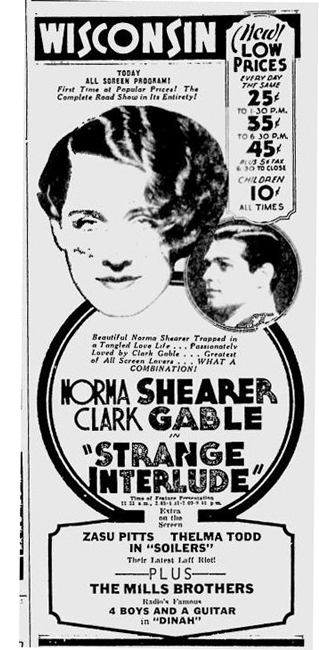 Strange Interlude was one of several Broadway properties bought by Irving Thalberg and his story editor Samuel Marx. There were censorship constraints, so that Nina is no longer promiscuous and doesn’t abort her and Sam’s child. Still, in the film she does bear Ned’s child, and they mislead Sam into believing he’s the father. The plot is propelled by the lovers’ reunions at long intervals and their hesitation about revealing their secret to Sam, to Charlie, and to the grown-up Gordon. They rekindle their passion but decide not to run off or tell Sam the truth. If Nina is punished at the end, it’s because she’s never able to join Ned as his life partner.
Strange Interlude was one of several Broadway properties bought by Irving Thalberg and his story editor Samuel Marx. There were censorship constraints, so that Nina is no longer promiscuous and doesn’t abort her and Sam’s child. Still, in the film she does bear Ned’s child, and they mislead Sam into believing he’s the father. The plot is propelled by the lovers’ reunions at long intervals and their hesitation about revealing their secret to Sam, to Charlie, and to the grown-up Gordon. They rekindle their passion but decide not to run off or tell Sam the truth. If Nina is punished at the end, it’s because she’s never able to join Ned as his life partner.
The script cuts the action down to fit a 112-minute running time, largely by dropping or condensing monologues. Very long speeches in the play become two or three lines in the film. There remained the question of how to present the monologues on film. In the early talkie days, people weren’t certain what to do.
MGM publicized the menu of options being considered. Director Robert Z. Leonard largely rejected the play’s tactic, that of having the thinking character turn slightly to the audience and speak in a different tone of voice. For a time, the production team thought of using superimpositions. A ghostly double of one character would appear at the proper moment and utter the thoughts while the tangible character stayed silent. Alternatively, Leonard considered having the ghostly doubles entirely replace the actors during the monologues. Given the pace at which the monologues bounce around the scene, the superimpositions would have been throbbing in and out pretty often.
The solution was the one that’s obvious to us. We simply see the thinking character and hear his or her thoughts, more closely miked, while the actor’s lips don’t move. Why did Leonard and his colleagues even consider other options? Partly because rerecording was not yet established as reliable enough to allow inserting lines, some mere interjections, into the flow of the recorded dialogue.
In production, the problem was solved in a mind-boggling way. The film was shot twice. The first go-round recorded the entire text, dialogue and monologue, for each scene. The dialogue was timed to fractions of a second. Then the monologue portions were transferred to phonograph discs. Then the film was rehearsed and re-shot, with the discs used as playback guides for the actors’ pauses. And the playback was recorded on the set, with the dialogue.
When the film was finally cut, the cleanly recorded monologues from the first go-round were cut into the shots of the actors thinking. They were amplified and, I think, spruced up a little in mixing to yield a more intimate sound field. Often they’re whispered, or at least delivered in a subdued tone.
Today the technique looks fairly conventional, at least at any given moment. At the time it seems to have struck observers as a novelty. “It is a technique admirably suited to the audible screen,” remarked the New York Times critic, musing, “I wonder whether these spoken private thoughts will inspire another picture with them?” Variety mocked Strange Interlude as a critic’s picture, a natural for “discourses on academic analyses of the contemporary ‘art of the cinema.’”
Both opinions strike most of us as deeply wrong. Today Strange Interlude looks a misbegotten monster, opposed to nearly everything we would celebrate about Hollywood sound cinema. Just when films were starting to pick up the pace, this movie goes lugubrious. Perhaps in the theatre O’Neill’s monologues wrap the action in a rhetorical micro-dramas, but in the film they expose the plot as a relentless tango of bourgeois self-absorption. The monologues drain the film of curiosity, suspense, surprise, and affect. There is no mystery in it. Everything is said, every question answered in advance. It must be one of the most absolutely explicit films ever made.
Yet if we argue that poor works of art can have worthy historical influence, I’d submit Strange Interlude as Exhibit A. Its purpose was misguided, and it bungled achieving even that, but it threw up an important convention that would eventually enhance cinematic storytelling.
Keep it to yourself, and to us
As a novelty, the filmic inner monologue ran risks. The Los Angeles Times critic worried that the movie version could confuse people who hadn’t seen the play. The ballyhoo for the release talked it up as “the first to pioneer in a new field of the talkie; namely, the presentation on the screen of hidden thoughts as well as the regular spoken dialogue.”
To assist viewers with the convention, the film has a foreword implying that we won’t see lip movements.
In order for us fully to understand his characters, Eugene O’Neill allows them to express their thoughts aloud. As in life, these thoughts are quite different from the words that pass their lips.
The opening scene immediately reinforces the point. Charlie walks down the street, greeting a one-legged soldier. This reassures us by displaying normal dialogue.
Charlie comes to the camera and pauses at the gate, musing aloud, “This pleasant old town, dozing. What memories it brings back.”
Then we get the film’s first inner monologue. His voice clear, his mouth closed, Charlie eyeballs the camera in a confiding way no one else will in the film. “Queer things, thoughts. Our true selves! Spoken words are just a mask to disguise them.”
The device is bared. It has been sharply contrasted with external dialogue and spoken monologue, and the theme of hidden thoughts is blatantly announced. Soon enough, after embracing Nina, Charlie’s voice-over reminds us: “How she’d laugh if she could only read my thoughts.” In the film’s first moments, its unusual sound device is flagged with Hollywood’s customary redundancy.
Throughout the film, Charlie is the only character who will occasionally play to the camera, in an echo of the stage production. The gesture reflects his role as an ineffectual observer of the Nina-Sam-Darrell triangle. In the film’s first sequence, which corresponds to the play’s first act, Charlie is also a crucial force for exposition, getting the lion’s share of inner speeches. In earlier plans for the play, he was intended as a chorus or stage manager.
So the film introduces its narrational device very explicitly. But as a film it offers a chance to coordinate the dialogues more tightly than was possible on the stage. With one character speaking while the others freeze, there was an inevitable slackening of pace. The movie camera, however, can isolate the thinking character. We can’t see what the offscreen characters are doing, so often they more or less cease to exist during the monologues. Concentrating on one character, we forget the others.
Probably O’Neill intended the fragmentary quality of some of the monologues as an equivalent of the stream-of-consciousness technique that Joyce had brought to literature with Ulysses in 1922. But by linking voices in a fairly linear way, Strange Interlude achieves the effect of an older novel in the Balzac-Dickens-Tolstoy line. In these works the omniscient literary narration shifts among characters within a scene. The film firms up this sense of gliding from mind to mind by isolating characters in singles, cueing us to expect a monologue at any moment. Sometimes, however, the film dares to interweave its dialogues and monologues within a sustained shot. At one point an aside from Nina in a two-shot is echoed by one from Charlie; she passes the ball by lowering her eyes, while he lifts his head.
The interpolations become quite fast and precise, as you can see from this extract.
It seems to me that film uses the technique more judiciously than the play does. After Charlie’s ruminations have provided exposition, Nina and Ned, the furtive lovers, get most of the monologues. Occasionally the drama adds new characters, such as Sam’s mother and the little boy Gordon, who seems to intuit Nina’s guilty thoughts. The film stages some climaxes as a ping-pong game of monologues, often without the cushioning of dialogue bits.
Here the characters seem to be conducting telepathic conversations.
But enough about me
Today the inner-monologue technique in Strange Interlude seems at once familiar and peculiar. I think that’s because the convention, in both fiction and film, didn’t develop along the choral lines the play and film laid down.
Today novelists are advised to stick to only one point-of-view character per scene. A current manual warns: “If you simply jump from head to head as the mood strikes you, the voice becomes a fractured mess.” Manuals of O’Neill’s time gave the same advice. Critic Clayton Hamilton admitted that a viewpoint could shift from scene to scene or chapter to chapter (the so-called “limited omniscience” technique) but he stressed that within a scene, the author should stick to rendering only one character’s viewpoint.
This is what we have come to expect in mainstream cinema. Not only inner monologues but all channels of subjectively tinted information are usually slanted toward one character per scene. So a film might have several point-of-view characters in its overall running time (e.g., Psycho), but any given scene is likely to be anchored around one.
When inner monologue doesn’t do this, comedy can result. Cuddling on a sofa in Me and My Gal (1932), Danny and Helen discuss a picture he remembers as “Strange Innertube.”
Ten years later, in A Yank on the Burma Road, the same gimmick was yielding flat-footed comedy.
Perhaps because it seemed a bit silly, very few 1930s filmmakers seem to have picked up the inner monologue device for serious drama. When they did, the multi-voiced version seems more common. In The Life of Vergie Winters (1933), the main characters attend a political rally, and each one gets a bit of interiority.
Thornton Wilder’s play Our Town (1938) not only presented a commenting narrator in the form of a stage manager, but included a scene of a wedding ceremony that assembled thoughts issuing from the minister (played by the Stage Manager) and the bride’s mother. For the 1940 film version, other characters’ inner monologues were added.
Both Vergie Winters and the Our Town film also include moments focused on a single character’s inner monologue. Still, it’s remarkable how few films of the 1930s pick up on device at all. I speculate that storytellers became more comfortable with it as it became more common on radio late in the decade. The strategy was emphasized by Orson Welles and especially Arch Oboler. By 1939 Oboler was building entire plays out of what he called “stream of consciousness” technique. Soon the inner monologue as we know it started to be heard in talk-filled films like Angels over Broadway (1940) and noirish tales like The Stranger on the Third Floor (1940).
Perhaps it took radio to teach filmmakers the dramatic power of the inner monologue. It was certainly suited to many genres, from crime and suspense stories to melodrama and even comedies. Since it crystallized in the 1940s, the technique, while rare, has never really gone away. Ingenious filmmakers, from Resnais to Wong Kar-wai, have revived and revised it.
More generally, I suspect we should thank radio and the stage, including plays as ungainly as Strange Interlude, for urging filmmakers to try for more. These models pushed narration beyond the momentary shove and tug of character-in-a-situation and overlaid a speaking voice that undertook the task of remembrance, commentary, and confession. Novelistic cinema, of a certain kind, was launched.
A later entry will consider another convention launched by an MGM movie in 1932. But you have probably figured out what that is.
A big thank-you to Michele Hilmes and Shawn Vancour for helpful guidance in the literature of radio. I’ve also learned from Neil Verma’s Theatre of the Mind: Imagination, Aesthetics, and American Radio Drama (University of Chicago Press, 2012). Thanks as well to Kat Spring and Luke Holmaas for suggestions on 1930s sound.
On the staging of the play, see Philip Moeller, “Drama Makes Regular Stops,” Los Angeles Times (17 March 1929), C14. O’Neill’s novelistic intentions are discussed in “Origin of Drama Traced,” Los Angeles Times (3 March 1929), C16-C17.
I mention Ulysses as an influence, but surely O’Neill read Virginia Woolf, Ford Madox Ford, and other modernists too. The idea of a split-vocalizing character was explored in earlier avant-garde drama. One precedent which O’Neill might have known is the “monodrama” of Nikolay Evreinov. Eisenstein points out the parallel in his memoirs (Beyond the Stars, BFI/ Seagull, 1995), 521. (Thanks to Yuri Tsivian for the lead.) Joseph Wood Krutch defends the play’s novelistic introspection in The Nation (15 February 1928), 192. In all, Strange Interlude strikes me as an amalgam of the older novelistic tradition with the emerging stream-of-consciousness technique. Some, probably including me, would call the play a piece of middlebrow modernism.
On the making of the film, see “Filming ‘Interlude,’” New York Times (13 March 1932), X6 and Edwin Schallert, “Mute Stars to Speak Words,” Los Angeles Times (9 March 1932), 7. Lea Jacobs points out that re-recording practice in Hollywood faced problems of exact timing. Not until 1935, with the advent of “push-pull” tracks and click sheets, could filmmakers control in postproduction the tight interweaving of sources that Strange Interlude created through playback in production. See her Film Rhythm after Sound: Technology, Music, and Performance, discussed in an earlier entry. On Thalberg’s strategy of buying Broadway hits, see Mark A. Vieira’s Irving Thalberg: Boy Wonder to Producer Prince (University of California Press, 2010), 161-198.
The New York Times critic Mordaunt Hall reflected on the inner-monologue technique in “At the First Night of a Worthy Film” (11 September 1932), X3 and “The Screen: Eugene O’Neill’s ‘Strange Interlude’ Is Engrossing and Compact in Film Form” (1 September 1932), 24. The ballyhoo mentioned comes from Sid Grauman, who claimed he was going to embed a print of the movie into a wall niche of his theatre as a permanent memorial. See “‘Interlude’ Print to Be Sealed in Theater,” Los Angeles Times (23 July 1932), A7. The Variety review comes from 6 September 1932, 15.
The inner monologue is one type of what we call in Film Art “internal diegetic sound.”
Loyal Marxians will recall Groucho’s address to the audience in Animal Crackers (1930): “Pardon me while I have a strange interlude.”
Arch Oboler employs “stream-of-consciousness” in some of his 14 Radio Plays (Random House, 1940); his glossary explains the device as “Thoughts in the mind of character; method of delivery should be quiet, semi-monotone, with far less coloring than ‘conscious’ speeches” (257). The definition would cover flashbacks, but clearly some of Oboler’s 1939 plays such as Baby and The Ugliest Man in the World use the inner monologue. The former is printed in 14 Radio Plays, and the script of latter is available here. Go here to listen to both.
It seems clear that critics’ demand that viewpoint be restricted for an individual scene, however much it may shift between scenes, stems from the influence of Henry James. James argued for the unity and power of a limited point of view, often conceived as “seeing” the action from a certain character’s “vantage point.” “There is no economy of treatment without an adopted, a related point of view,” he writes in the preface to The Wings of the Dove. “I understand no breaking up of the register, no sacrifice of the recording consistency, that doesn’t rather scatter and weaken.”
What Joseph Warren Beach called “the well-made novel” trend that followed James placed great emphasis on this economy. See Beach’s neglected but astute The Twentieth Century Novel: Studies in Technique (Appleton Century Crofts, 1932). My paraphrase of Clayton Hamilton comes from Materials and Methods of Fiction (Doubleday Page, 1917), 1228-129. The contemporary advice I quote is in Sandra Newman and Howard Mittelmark, How Not to Write a Novel (Penguin, 2008), 164.
A bold use of O’Neill’s abruptly spliced monologues comes from a different author named James. In one scene of her detective novel Cover Her Face, the late P. D. James gathers several suspects waiting to be questioned. “All of them sat in essential isolation and thought their own thoughts.” James’ third-person narration is omniscient with a vengeance, leaping from mind to mind, quoting the thoughts in parallel blocks. The force of the scene comes not only from the jumps in viewpoint but also from the way they violate a cardinal convention of detective stories. The culprit, we have been told, “must not be anyone whose thoughts the reader has been permitted to follow.” Do James’ plunges into interiority clear these people of suspicion? The formulation comes from Ronald A. Knox, “A Detective Story Decalogue,” in Howard Haycraft, ed., The Art of the Mystery Story (Grosset and Dunlap, 1947), 194. Of course this rule applies to the puzzle-oriented story in the Sherlock Holmes tradition, not the thriller or suspense tale. For more on the difference see my web essay “Murder Culture.”
P.S. 22 March 2015: You never stop learning. I just discovered that George Meredith’s novel Rhoda Fleming (1888) contains a passage that prefigures, in all its awkwardness, the device of Strange Interlude, both play and movie. Rhoda and Robert are talking, and Meredith’s omniscient commentary shadows their lines with parenthetical indications of their thoughts. These mental interjections often contradict their spoken words.
“I’ve always thought that you were born to be a lady.” (You had that ambition, young madam.)
“That’s what I don’t understand.” (Your saying it, O my friend.)
“You will soon take to your new duties.” (You have small objection to them even now.)
“Yes, or my life won’t be worth much.” (Know, that you are driving me to it.)
“And I wish you happiness, Rhoda.” (You are madly imperilling the prospect thereof.)
And so on. This to-and-fro passage occurs in Chapter XLIII. And yes, the book isn’t called Rhonda Fleming, more’s the pity.
Strange Interlude.
Filling the box: The Never-Ending Pan & Scan Story
The Limey (1999).
DB here:
Here’s a story, so far not finished.
Chapter 1: You can’t put ten pounds of mud in a five-pound sack (Dolly Parton)
Once upon a time, before home video and cable, movies were broadcast on television. They might be drawn from local TV stations’ 16mm collections or transmitted from the networks on “movie of the week” shows. When the film was a widescreen film, especially in anamorphic processes, it was adjusted, as we now say, “to fit your screen.”
That TV screen was in an aspect ratio of about 1.33:1 (4 x 3), like pre-1950s commercial films. But the film to be shown might be 1.75, 1.85, or 2.35. How to show it?
You could retain the whole original frame with letterboxing at top and bottom. This was done more often in Europe than in the US, I believe. Our TV system had 100 fewer lines, so the tiny picture area became quite degraded. And then (as now) there were people who persisted in believing that those black bars at top and bottom were somehow taking away part of the movie.
Far more common was the tactic of somehow making the wider image fill the box. This tactic came to be called “pan and scan.” It gained the name because in preparing the TV version, an engineer would sometimes swivel the TV frame across the original image, carving into it and sliding to and fro. The term pan and scan covered another tactic, simply making two shots out of one. We might call it “cut and scan.” Here’s an instance from an old VHS tape of Advise and Consent, one of the most daring American widescreen films. The slightly fatter faces are due to the distortion of the CRT monitor I shot from.
Sometimes there was neither scanning nor cutting, just simple cropping. The engineer would find a 4×3 chunk and extract it from the bigger image. To keep things simple, that chunk was usually around the center. This “center-cutting,” as it was called, could yield some funny results, as in the protruding nose in a 16mm TV print of Tarnished Angels.
Chapter 2: Shoot, protect, screw up
Some widescreen processes from the 1950s onward didn’t frame the image wide during filming. The image would be captured “full frame.” The result might later be “hard matted,” or letterboxed, during printing, as in the shot from The Limey surmounting today’s entry.
Sometimes, the 35mm theatrical prints would retain a 4:3 image, or something even squarer. The frames in a 35mm print of Do the Right Thing are about 1.19:1. Note the extensive headroom in the left image, from a 35mm print. For screenings the projectionist would mask the image to the proper proportions—typically 1.85. Here’s the version on the Criterion DVD, at 1.75 for widescreen monitors.
The full-frame image was available for cropping to 4:3 TV viewing. Many cinematographers used the “shoot and protect method” by composing for both 1.85 and 1.33.
There were problems with this “open matte” process in theatres. I recall a mis-framed version of Jerry Maguire in which the locker-room scene showed more of Cuba Gooding’s goodies than was intended. And a full-frame print of Godfather II reveals the duct-taped marks on the set floor (as if Pacino would ever hit them).
The same problem would appear in full-frame TV versions that were carelessly transferred from film. Microphones, unfinished stretches of the set, and other production elements might jut in. Some cinematographers didn’t consider TV versions important enough to worry about. “Fuck TV,” was heard occasionally.
More basically, the full-frame result wasn’t faithful to the “original” theatrical version, which was designed to be shown wide. Purists objected that TV versions, even if shot full-frame, didn’t fulfill the intention of the director.
Chapter 3: 16 into 9 won’t go
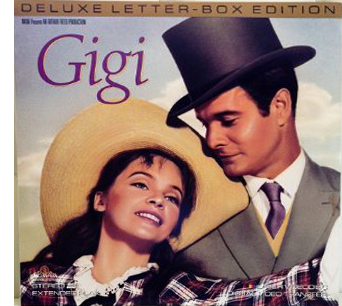 In the 1990s there came laserdiscs and DVDs. These offered properly letterboxed framings. Cinephiles cheered. It seemed that the days of pan and scan were over.
In the 1990s there came laserdiscs and DVDs. These offered properly letterboxed framings. Cinephiles cheered. It seemed that the days of pan and scan were over.
Actually, pan-and-scan hung on quite a bit. Many laserdisc editions weren’t letterboxed. Airline versions offered cropped images, and still do. (Those tiny screens, after all.) Some DVDs were released in pan-and-scan versions, while others offered a letterboxed version of the film on one side of the disc and a full-frame version on the other. But serious cinephiles could assume that the general public was starting to understand that films intended to be seen at a certain ratio should be shown that way.
As the new disc formats emerged, so did a plan to standardize High Definition video for a 16 x 9 display. The European Union promoted it during the mid-1990s, and over the next twenty years it became accepted for both computer monitors and video displays. The new format developed in sync with the gradual replacement of analog broadcasting by HD transmission.
The problem is that 16:9 is a ratio of 1.77:1, close enough to 1.85 for most purposes but far off the ratio of 2.20:1 (many 70mm films) and 2.40 (anamorphic widescreen after about 1970). Yet maybe this isn’t a problem. Why not just letterbox those wider images within the 16:9 format?
If only things were so simple.
Chapter 4: Slightly off, and more
Today, at least 77% of US households have HD monitors. (Surprisingly, 41% of TVs still in use are Standard Definition, many presumably comforting children and old people.) Broadcasters make concessions to the 4:3 ratio by keeping the key action centered and cropping the 16:9 image.
Nature abhors a vacuum, and TV monitors apparently can’t bear blank space. So some purveyors of movies on video have updated pan-and-scan for the HD age. Cable, for instance.
It’s been years since I clicked my cable remote to the Sundance Channel and the Independent Film Channel, now known as IFC. Seeing them a couple of weeks ago was a mild shock. Now each boasted a bug in the lower right corner, and swarming over the image were lots of texts plugging other programs. Worse, there were commercials for weight-loss scams, Burger King, and Portlandia. More to the point here, these services give us a new version of pan-and-scan.
Thanks to the center-cutting method, I found plenty of examples of anamorphic 2.40 films sliced up to fit our monitor. Here are a couple of examples from IFC’s version of Jaws. In the first pair, the wider image gives Bruce room to move, and Brody is more salient. In the second pair, Hooper is speaking, but in the IFC image he’s even more peripheral than Mr. Nose in Tarnished Angels.
In rare cases, IFC seems to run full-scope prints; I spotted one of Chinatown. But it doesn’t seem to be the norm. Maybe IFC’s New Age pan-and-scan is trying to live up to the channel’s slogan: “Always on. Slightly off.”
Many films of the early widescreen era are compromised even at 16:9. The nose shot from Tarnished Angels would be a bit cramped in a 1.77 format, and many other shots would suffer as well.
When the wide format was still new, filmmakers were exploring what they could do it, and that included scattering important information throughout the frame. Preminger was all over the place in the Senate and Committee-Room scenes of Advise and Consent. What would you do to fit these shots into 16:9? I make a silly stab at center-cutting.
Films like this remind you of how the technology of home video has made our filmmakers less daring in their compositions. Would anyone today risk the bold composition that Richard Fleischer uses in the mortuary scene of Compulsion? As you can see from the image at the end of the entry, the crucial pair of eyeglasses rests on the lower frameline, as if on a shelf. ‘Scope nudged some directors toward quite intricate shot designs.
By the time Tootsie was made, with home video on the rise, filmmakers were pressed to shoot and protect better. So here there’s plenty of unused space on the sides, and most action will fit into any old frame proportions. In the shot below, the 1.33 version (available on the flip side of the DVD) is extracted from the Scope version (and slightly squeezed as well). The 1.77 version I grabbed from the Sundance Channel is also extracted from the wider framing. Both reframe the image to emphasize Michael and Jeff, the comic duo. The original 2.35 image centers the food counter and for some reason gives equal space to the inconsequential aisle and stove on the right.
Obviously, composition isn’t particularly important here. Solid as Tootsie is at the level of writing and performance (“Oh, God, I begged you to get some therapy”), we wouldn’t point to it as a model of pictorial finesse.
Moreover, pan-and-scan isn’t just a matter of retaining the action in different framings. Recasting the image changes the scale of the things in it. Old TV pan-and-scan, as in my first Advise and Consent example, makes the figures chopped out of the composition seem closer to us. Sometimes today’s pan-and-scan makes the figures seem smaller. That’s because the full-frame original image offers a bit more space at the top or bottom than we see in the anamorphic version, and that gets incorporated into the 1.77 or 1.33 version. (You can see it in the Jaws example above, with the space above Quint’s head.)
The push-pull of different versions is particularly noticeable in close views. The center-cut (and perhaps slightly squeezed) IFC version of The Matrix keeps Cypher prominent in the foreground, with the car crash in the rear. Yet do you see him and the crash as closer to us in the wide original? I do. Maybe it’s because both Cypher and the background plane are larger in the second frame.
By contrast, several shots in the IFC version of The Matrix have areas at the top and bottom not visible in a wider-frame DVD. In any case, extracting from an anamorphic frame or here, pulling the 1.77 version out of a full frame, can subtly alter the scale and perspective relations within the shot.
In the old TV days, networks would show credit sequences in full widescreen, as they were obliged to make all the contributors’ names visible. So you often had the odd situation of a widescreen credits sequence that would end a movie shown in 4:3. Sundance has updated the technique. Tootsie’s penultimate shot of Julie is at 1.77, but as she and Michael walk off, we cut immediately to a final shot at 2.35 letterboxed, over which the credits roll.
Another old trick has been revived. Back in 1960s TV, you’d have an obligatory widescreen image with credits information, but the shot might go on to show story action. Then the TV framing would close in on the wide image and gradually fill the screen with a 4:3 composition. Damned if I didn’t find the same thing happening last weekend on Sundance. The opening credits for The Graduate were in full ‘scope. That shot dissolved to the famous shot of Benjamin sitting in front of his aquarium, blankly facing the camera.
To retain the credits and keep the dissolve smooth, the engineer slowly enlarged the original shot to 16:9 proportions as Ben’s father comes in. (You can see the Sundance bug lift slowly into the lower right of the image.)
The result is a camera movement, a zoom in, that isn’t in the original film. In the original framing below, the shot scale on Ben isn’t much different, but the little scuba diver remains prominent in a way he isn’t in the 16×9 image.
Chapter 5: VOD = Variants On Demand
On cable TV we Americans can go to TCM for a purer experience of widescreen from the old days. But the more recent films shown on IFC, Sundance, Pivot, and other cable channels are likely to be hacked up in the new way. In this respect as well as others, cable has become the network TV of the new age. We get shows of all types, not just sports and movies but original series, except that now we get to pay to watch commercials.
Surely things are better with streaming?
In the spot-checking I did on Amazon and Hulu Plus, I didn’t find instances of cropping. In particular, the Criterion films I checked retain their proper aspect ratios. Netflix is another story. At this point we must thank the anonymous genius behind What Netflix Does. This site exposes a great many ways that the most popular streaming service has relied on pan-and-scan, with different crops for different markets.
In fairness, once the anonymous genius contacted Netflix, some deficient versions were replaced by proper ones. But several of the more recent examples have not been changed. Who knows how many others remain panned and scanned because the alterations haven’t yet been detected?
In the light of all this, I’m wondering if filmmakers have been protesting this mangling of their work. During the early days of TV broadcasts, directors complained about cuts and commercials, and in more recent years we’ve learned that directors were won over to digital projection in theatres because then “the film would be shown exactly as the director intended.” With many more people seeing the film on video platforms than see it in theatres, you’d think we’d have heard more from the creative community. Once more their movies are being jammed and lopped to fit whatever box they’re put in.
I’m tempted to say that when we want to get the movie in a form close to the ways its makers wanted it to be seen, we need to see it in a theatre or get it on DVD/Blu-ray. There are exceptions, of course. Theatres can botch aspect ratios today just as they have in earlier decades, chiefly by using the wrong masking. And we have filmmakers who alter the aspect ratio on DVD, usually to expand the field from 2.35:1 to 1..77 in hopes (vain) of evoking the Imax effect (Tron: Legacy, The Hunger Games: Catching Fire).
Without getting into technicalities, some of the 1.77 versions you’ll see have a bit more area at the top and the bottom of the frame than we find in the full anamorphic image. In many cases, like the shot of Cypher in The Matrix, it’s because the film was shot in Super-35. This very full-frame capture format allowed filmmakers to extract a 2.40-proportioned image, or a 4:3 image, or images in other aspect ratios. The Wikipedia entry on Super-35 is very helpful on this and other aspect ratios, both for cinema screens and TV. Some shots in the IFC Jaws had a little more vertical area as well. I assume that’s because the ‘scope image on the DVD cropped a tad off the top and bottom of the full-frame image on the film.
Thanks to Jonah Horwitz for pointing me toward the site What Netflix Does. More general thanks to James Quandt for our long-running conversation about aspect ratios. Other entries on aspect ratio on this site involve Fritz Lang, Jean-Luc Godard, and Wes Anderson. I set out some ideas on CinemaScope aesthetics in this video lecture.
P.S. 28 January: Thomas Zorthian was ahead of the curve on this. Back in 2011 he noticed the Netflix pan-and-scan.
Your article hit home for me as I have been trying to bring attention to this problem for a while. I even wrote Roger Ebert hoping he could use his influence. He was kind enough to publish my letter: http://www.rogerebert.com/letters/netflix-stream-sometimes-overflows-the-banks. I have also written to HBO and am considering a petition to ask them to show movies in the proper ratio before HBO GO becomes a standalone service. This would enhance the value of this new service.
Thanks to Thomas for corresponding!
Compulsion (1959).
Pure hits of storytelling: Westlake, Oswalt, Brackett
To Each His Own (1946).
DB bere:
Old friend and student, and proficient blogger, Paul Ramaeker writes:
I’m in the middle of Slayground now. In his Stark guise, Westlake as a writer really is as fearsomely directed and effective as Parker himself. I was thinking about the particular narrative pleasures here, like the way that delayed exposition works with the perspective switches between different sections. There is such precision to the way he builds certain effects in a systematic way, the way that we see Parker making plans, going around Fun Island doing things, but Stark not telling us what, exactly. I really did not get the logic of painting white circles in the house of mirrors–I thought of them as targets. Then, [spoiler excised] it makes so much sense, and becomes such a pure hit of storytelling, producing such a rush of pleasure in the reading.
That’s the way Donald E. Westlake worked. With Elmore Leonard and Ed McBain, he was one of the top crime-action writers to emerge in the postwar boom in paperback originals. He wrote a huge number of novels and some screenplays (The Grifters, The Stepfather). Several films, notably Point Blank, The Outfit, The Ax, and Made in USA, were taken from his books.
I’ve paid tribute to Westlake’s prose in this entry, but why not another Richard Stark passage to show how it’s done? Many of the novels start with a “When” clause, and upon relaunching the series in 1997, Westlake picked a dilly:
When the angel opened the door, Parker stepped first past the threshold into the darkness of the cinder block corridor beneath the stage.
The “When” clause hooks you in firmly, with the last word of the sentence locking in a framework that explains the opening. Here’s a simpler prototype Westlake himself picked, from Flashfire:
Parker looked at the money, and it wasn’t enough.
Anybody else would have cut the and and put in a period. This is better, I think because it quietly leads us to expect something more: a piece of action, a demand for more money. Anyhow, once we’re arguing about whether to put in an and, we’re talking about a real writer.
Slayground is one of those nifty experiments Westlake tried, this time putting two books in a divided POV arrangement. Both Slayground and The Black Bird begin with the same action, a getaway described almost identically in each one. Parker and his sidekick Grofield separate. One book follows Parker’s fate and other follows Grofield’s. I want to read both right now.
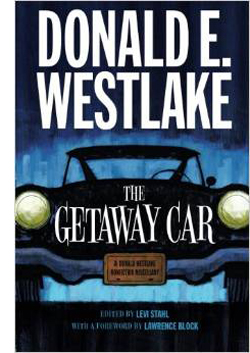 Before I do, though, I must signal (a) the University of Chicago Press’s brilliant idea of reprinting all the Stark novels; and (b) Levi Stahl’s wonderful compilation The Getaway Car: A Donald Westlake Nonfiction Miscellany. This consists of essays, memoirs, and interviews, running from 1960 into the 2000s. There’s even a recipe for tuna casserole contributed by Dortmunder’s girlfriend May.
Before I do, though, I must signal (a) the University of Chicago Press’s brilliant idea of reprinting all the Stark novels; and (b) Levi Stahl’s wonderful compilation The Getaway Car: A Donald Westlake Nonfiction Miscellany. This consists of essays, memoirs, and interviews, running from 1960 into the 2000s. There’s even a recipe for tuna casserole contributed by Dortmunder’s girlfriend May.
You learn a lot about Westlake’s life, of course; for one thing, you learn how Made in USA became unseen in USA for several years. A career-survey interview with a convicted bank robber is alone worth the price of admission. Stahl adds in fragments from an autobiography (“I was born in Brooklyn, New York, on July 12, 1933, and I couldn’t digest milk”).
Westlake was a thoughtful observer of his tradition, and he offers historical surveys and close readings of his hardboiled predecessors. He compares the prose of Black Mask writers Hammett and Carroll John Daly, and calls Raymond Chandler “a bookish, English-educated mama’s boy whose raw material was not the truth but the first decade of the fiction. This is not to denigrate Chandler, or at least not to denigrate him very much.” He praises Richard S. Prather for his “bonkers” style (“She was as nude as a noodle”) and registers his admiration for lesser-known contemporaries like Peter Rabe. He offers the best analysis of George V. Higgins I know, and his appreciation of Rex Stout warms the heart. Acknowledging the cunning ways that Stout hides plot gaffes under Archie’s patter, Westlake notes that perhaps Stout had “an affinity with those Indian tribes who deliberately include a flaw in their designs so as not to compete with the perfection of the gods.”
You also learn about the market. Westlake was a “fee reader” for Scott Meredith literary agency, one of the most prestigious around. He became a self-supporting writer in 1959, when he churned out over half a million words, all published. Writing an Avon paperback in 1960 would earn you $350, or $2800 in today’s money, but writing a serial for a magazine like Analog could net $450 for only 18,000 words. There’s a marvelous letter from that year in which a twenty-seven-year-old Westlake complains to a top publisher that he can’t get his best science fiction accepted, and that specific editors traduce the work of writers he knows. Stahl calls it “one of the most spectacular acts of bridge burning in the history of publishing.” Again, the author’s gesture recalls Parker’s chilly recklessness, but with jokes.
Popcorn and Red Vines
In his recent interview with the New York Times, Patton Oswalt included the Stark/Westlake Man with the Getaway Face as one of his favorite books of all time. It comes as no surprise that this gremlin polymath gets Stark/ Westlake. Those who know his fine Zombie Spaceship Wasteland will find more of the same in Silver Screen Fiend: Learning about Life from an Addiction to Film. As ZSW traced his early standup career and its intertwined relation to nerd culture, this quasi-memoir traces his early years in LA, writing for MadTV by day, honing his comedy act by night, and watching movies obsessively at all other times.
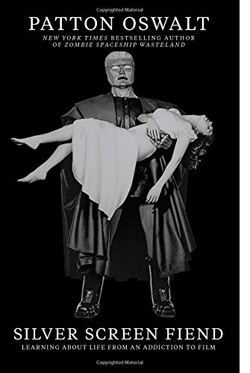 Despite his fondness for sitting far back (I’m down front) and mixing popcorn and Red Vines (I’ve been a Dots man for sixty years), Oswalt has left us the best memoir I know of being a sheer headbanging movie geek. A sort of nonfiction Moviegoer (Walker Percy), or a prose version of Cinemania, that disconcerting documentary in which everything reminds you of you, Silver Screen Fiend takes us into hard-core hell-for-leather filmgoing.
Despite his fondness for sitting far back (I’m down front) and mixing popcorn and Red Vines (I’ve been a Dots man for sixty years), Oswalt has left us the best memoir I know of being a sheer headbanging movie geek. A sort of nonfiction Moviegoer (Walker Percy), or a prose version of Cinemania, that disconcerting documentary in which everything reminds you of you, Silver Screen Fiend takes us into hard-core hell-for-leather filmgoing.
Filmgoing is the operative idea, not just film viewing. The book is set on the cusp of the DVD revolution, when the big-screen experience was so much better in contrast with VHS. There are descriptions of favorite theatres and fetishized experiences like Cocteau’s Beauty and the Beast and a Hammer movie marathon. At the same time, this “sprocket fiend” was also a “stage ghoul,” trying to out-kill the other standup comics at the Largo. The two obsessions fed each other, as when Oswalt arranged public readings of the script for Jerry Lewis’ legendary Day the Clown Cried.
Throughout, the movie madness emerges as another channel for the explosive energy of a young man burning with ambition. At the theatre the splendid lunacy might be onscreen, or in the row behind you, where Lawrence Tierney was talking loudly back to Citizen Kane. The moment pulsates because Oswalt wanted to be in movies too, maybe as a character actor.
The book hits one of its high points in telling of his big break, in Down Periscope (1996), where he utters one line as the camera sweeps past him. He describes the process of filmmaking as hammering slowly away at the movie that isn’t there yet. It’s like “blasting a tunnel through a mountain. Or brushing every grain of sand off of a fossil. You attacked it relentlessly.” Oswalt squeezes pages of entertainment out of brooding over how to deliver “There’s a call for you, sir. Admiral Graham.”
Rest assured that every movie you see where an actor delivers just one line? They’ve put this kind of thought into it. Sometimes you can see it. Sometimes they can hide it. But everyone who gets in front of that lens has this inner conversation. I was having mine now. I was about to speak on film.
The moviegoing spiral ends on 20 May 1999, when Oswalt sees Star Wars: The Phantom Menace. The postmortem at a dinner marks the moment when the addiction subsides. “It hits me, sitting there with my friends, that for all of our bluster and detailed, exotic knowledge about film, we aren’t contributing anything to film.” He realizes that film should be one ingredient in the fuel for your life. “But the engine of your life should be your life.”
The epiphany is movingly described. (I wish I could say I’ve learned the same lesson.) Oswalt implies that film frenzy was a phase he went through, and now he’s grown up. (I wish I could say the same for me.) Yet I’m encouraged that Oswalt has not gone cold turkey. He’s passed from gourmand to gourmet. “My love of movies has turned into a love of savoring them.” And he can’t resist movie comparisons when describing that day-and-date release sometimes called Life. “Faces are scenes. People are films.”
In the back of Silver Screen Fiend are thirty-three pages listing all the films Oswalt saw across four years, along with the theatres where he saw them (New Beverly, Nuart, Tales Café et al.). Plenty of pure storytelling hits there. Far from makeweight, these pages create a new list of the kind he obsessed over in Danny Peary’s books. How many twenty somethings will start checking off the titles here?
The team
Charles Brackett, Gloria Swanson, and Billy Wilder.
On his very first night at the New Beverly, Patton Oswalt caught, and was caught by, Sunset Blvd. and Ace in the Hole. He mentions they were “co-written and directed” by Billy Wilder. He doesn’t identify the other half of the co-.
Nor do most people. In the case of Sunset Blvd., that fellow was Charles Brackett, who now stands revealed as not only a gifted writer but the Samuel Pepys of classic Hollywood. “It’s the Pictures That Got Small,” edited by Anthony Slide, is an absorbing chronicle of a tempestuous collaboration and the lifestyles of an era. A Harvard-educated WASP from Saratoga Springs, Brackett became a novelist, was made drama critic for The New Yorker, and sat at the Round Table with the likes of Woollcott and Parker. After some of his fiction was adapted to film, he moved to Los Angeles.
Brackett’s early work seems to have been undistinguished, though I’d defend at least Picadilly Jim (1936). Eventually he wound up at Paramount partnering with Wilder, and under the aegis of Lubitsch they clicked for Bluebeard’s Eighth Wife (1938) and Ninotchka (1939). There followed Midnight (1939) and Hold Back the Dawn (1941) for Leisen, and Ball of Fire (1941) for Hawks–an early title of which, we learn here, was Dust on the Heart. Then came Wilder’s directed pictures, from The Major and the Minor (1942) to Sunset Blvd. (1950). Brackett was active in the Screenwriters Guild, became a producer, and continued to write scripts for his producing projects, including the delirious Niagara (1953) and the insufficiently delirious Journey to the Center of the Earth (1959). The Uninvited (1944), Brackett’s first solo production, remains charming, and To Each His Own (1946) is an interesting wartime weepie, with Olivia de Havilland massively frumped up. Miss Tatlock’s Millions (1948) also has its defenders.
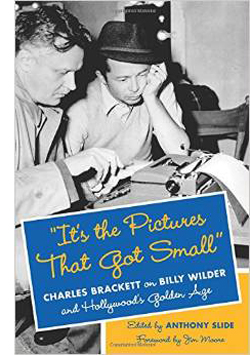 “It’s the Pictures That Got Small” is a plump album packed with tiny but revealing snapshots. Although Brackett wrote entries nearly every day, he often made do with very brief mentions. Slide has edited them judiciously and arranged them chronologically, with some stitching to fill in events. A 1936 entry strikes a warm chord:
“It’s the Pictures That Got Small” is a plump album packed with tiny but revealing snapshots. Although Brackett wrote entries nearly every day, he often made do with very brief mentions. Slide has edited them judiciously and arranged them chronologically, with some stitching to fill in events. A 1936 entry strikes a warm chord:
I am to be teamed with Billy Wilder, a young Austrian I’ve seen about for a year or two and like very much. I accepted the job joyfully.
By 1943, Brackett is recording something much more rankling:
My consciousness that, after years of partnership, his first free act was to stab me in the back…my conviction that he’s turned into a second-rate director…my knowledge of the awful thinness of his mind, his stupidly limited interests. Alas, alas. And my knowledge that I am as little stimulating for him as he is for me.
During this supposed phase of creative drought, they were working on The Lost Weekend.
Apart from charting this bumpy collaboration, Brackett gives us a lot of information about how films got made. We learn about studio differences (Paramount less disciplined than MGM) and the importance of telling stories to others, face to face. I found plenty to feed my act-structure appetite. I was happy to find how often moviemakers went to the movies. Brackett attends dozens, both premieres and regular shows, and he records how easily screenwriters could summon up an older picture to be screened, even at a rival studio. This from 1947:
In the afternoon Billy and I saw Mr. Deeds at Columbia to check on certain similar situations in The Hon. Phoebe. It proved helpful and an excellent picture despite curious non-sequiturs and at least one horrible scene, Cooper absolutely charming. I could see some loathsome Capra characters beginning to unfold, but still in the lovely promising bud stage.
As a writer, Brackett is no less captivating than Westlake or Oswalt. We can rejoice in his Algonquin acidity.
Chaplin seems to me as repellant a human being as I’ve ever been in the room with—a thin, reedy voice, a show-off-hog face, and hysterical protestations of liberalism.
Jean Arthur called us, worried about the fact that there’s another woman in the picture [A Foreign Affair]. “I have sex appeal,” she said calmly, but inaccurately.
Greeted at the office by a nasty little note from Charles Jackson [author of the novel The Lost Weekend]. I had addressed him as “Birdbrain” in a telegram, something I could do to any friend—but an unsafe term to use to a man five feet tall.
And there are flat-out funny stories. Here’s just one, reported by Wilder.
[Von Stroheim] has always thought Swanson too young and desirable for the role of Norma. “Look at her,” he said. “I would like to fuck her now.” “I,” said Billy, “would rather fuck you.” “You have,” von Stroheim retorted.
If it didn’t happen, I want it to have.
In short, three more items for your shelf—repositories of good stories in themselves, prods and teases for your own thinking about story-making.
The University of Chicago Press has mounted a fine infographic on Westlake/Stark’s Parker novels here.
P.S. 19 January 2014: Thanks to David Cairns for correcting a slip. My original entry said that Brackett co-wrote Ace in the Hole with Wilder. Actually, the collaborators on Ace were Lesser Samuels and Walter Newman. Be sure to check David’s excellent Shadowplay site.
Down Periscope (1996).












